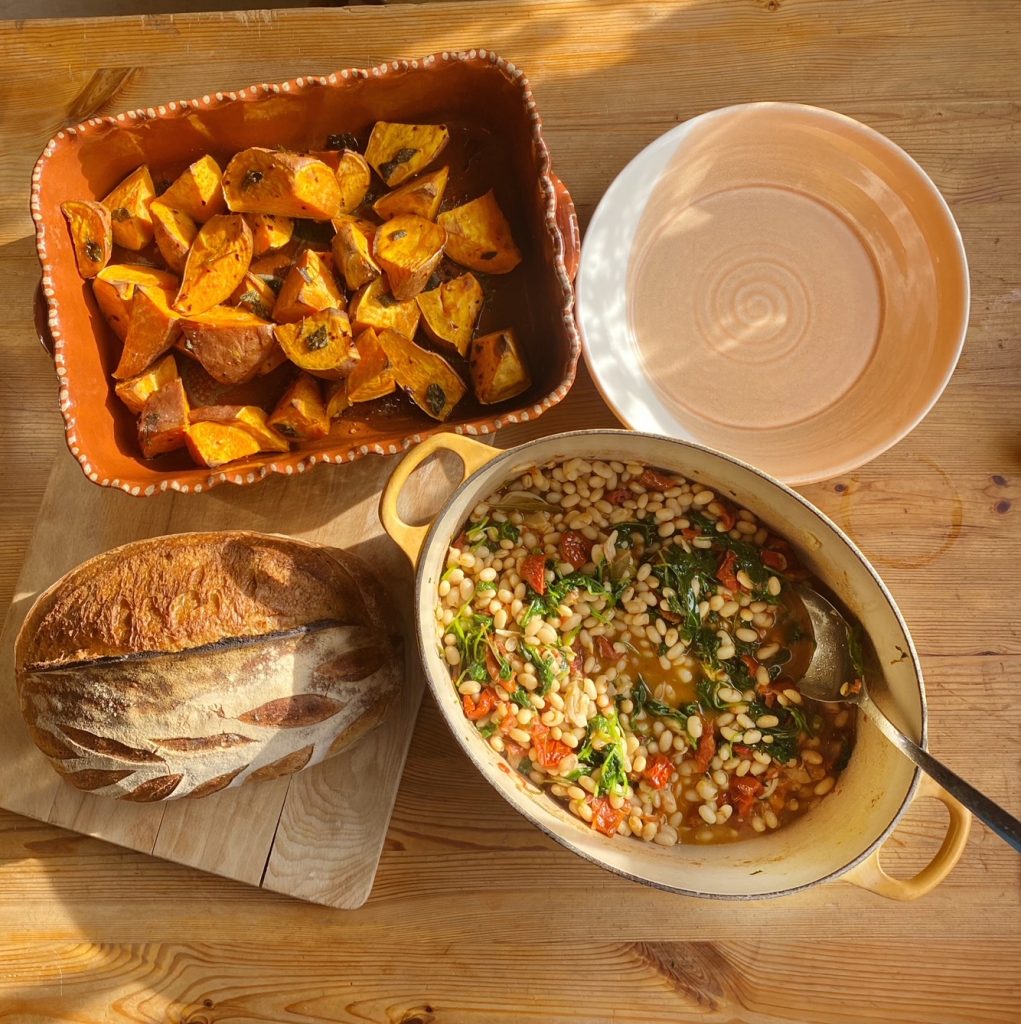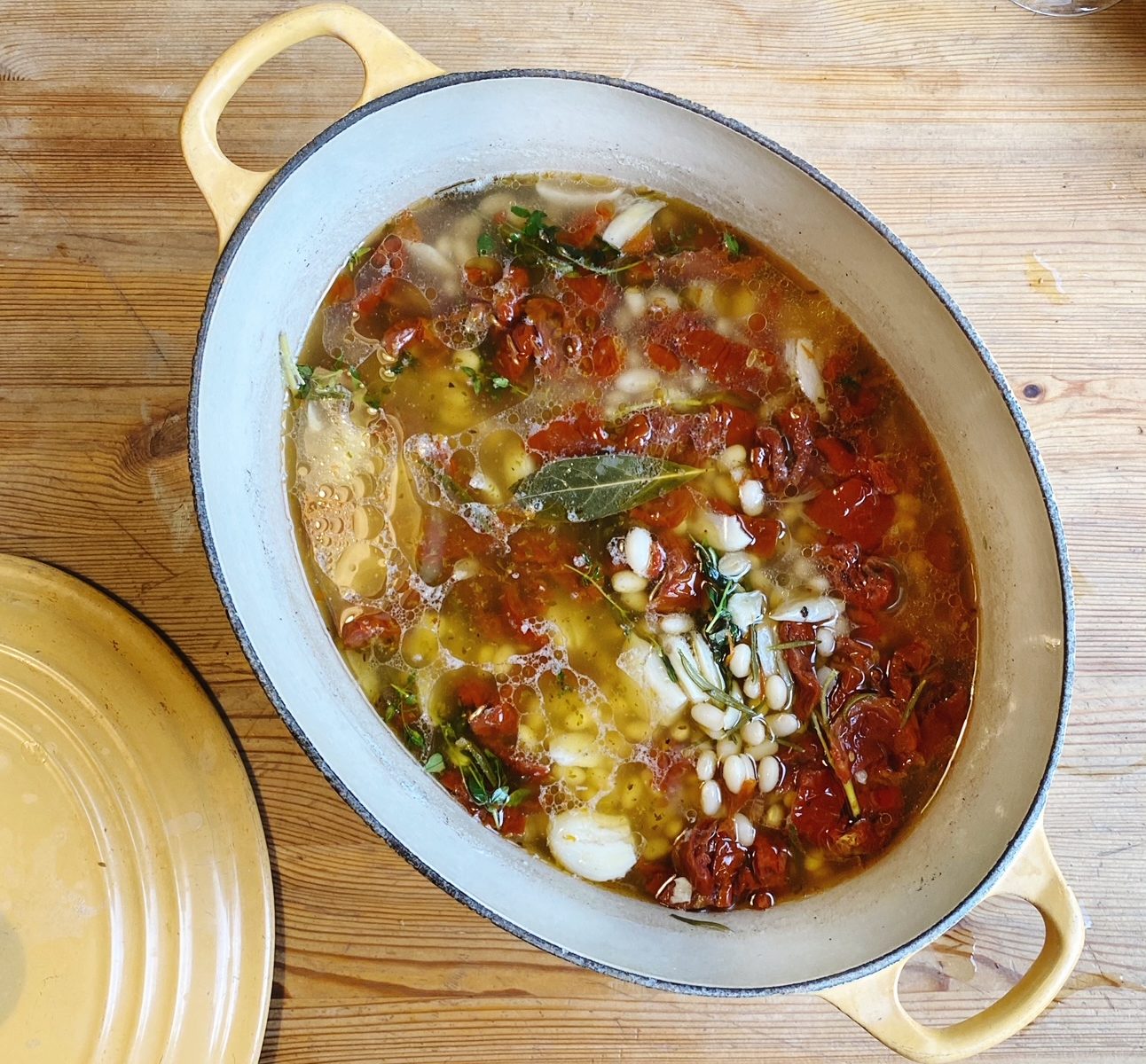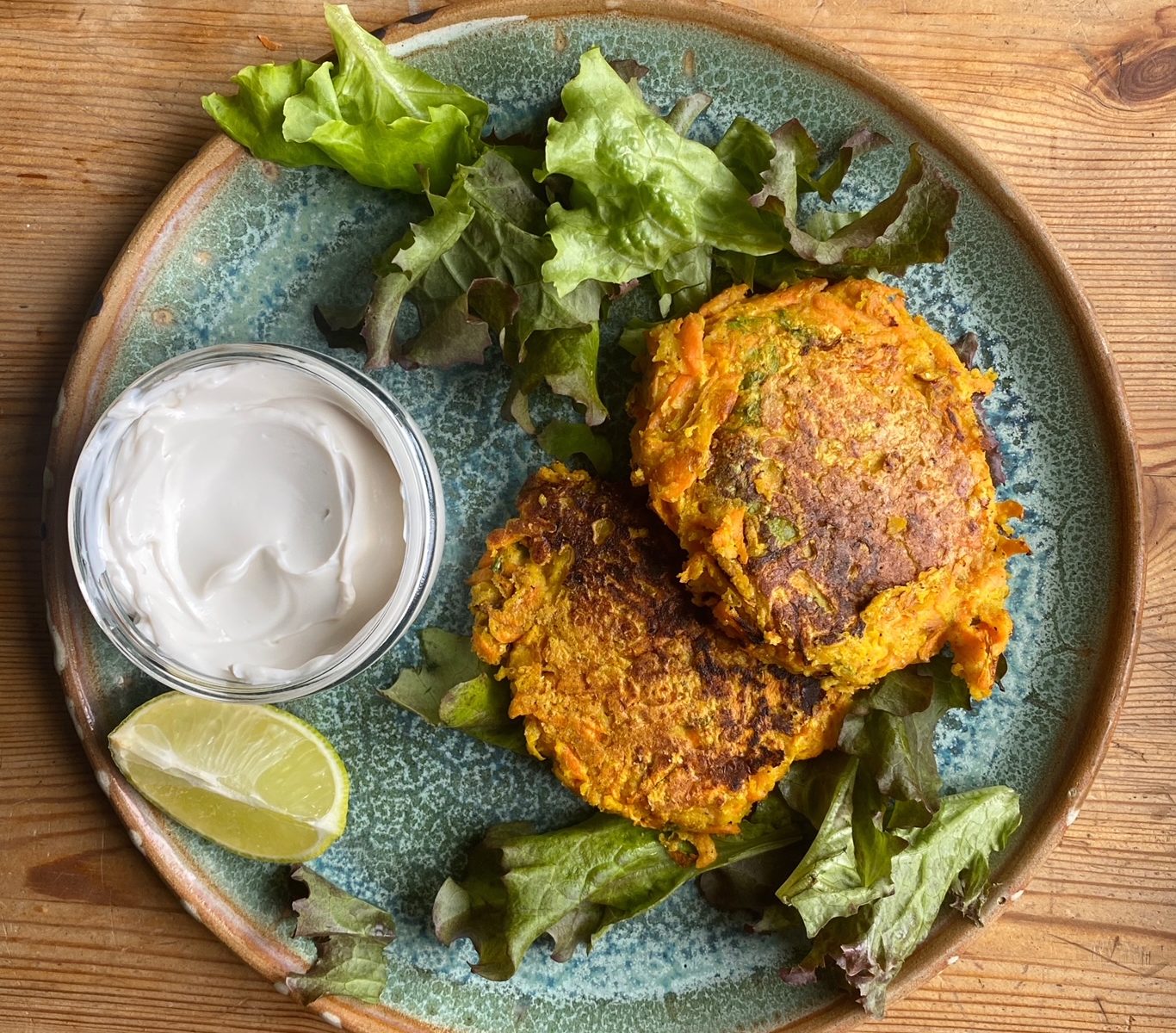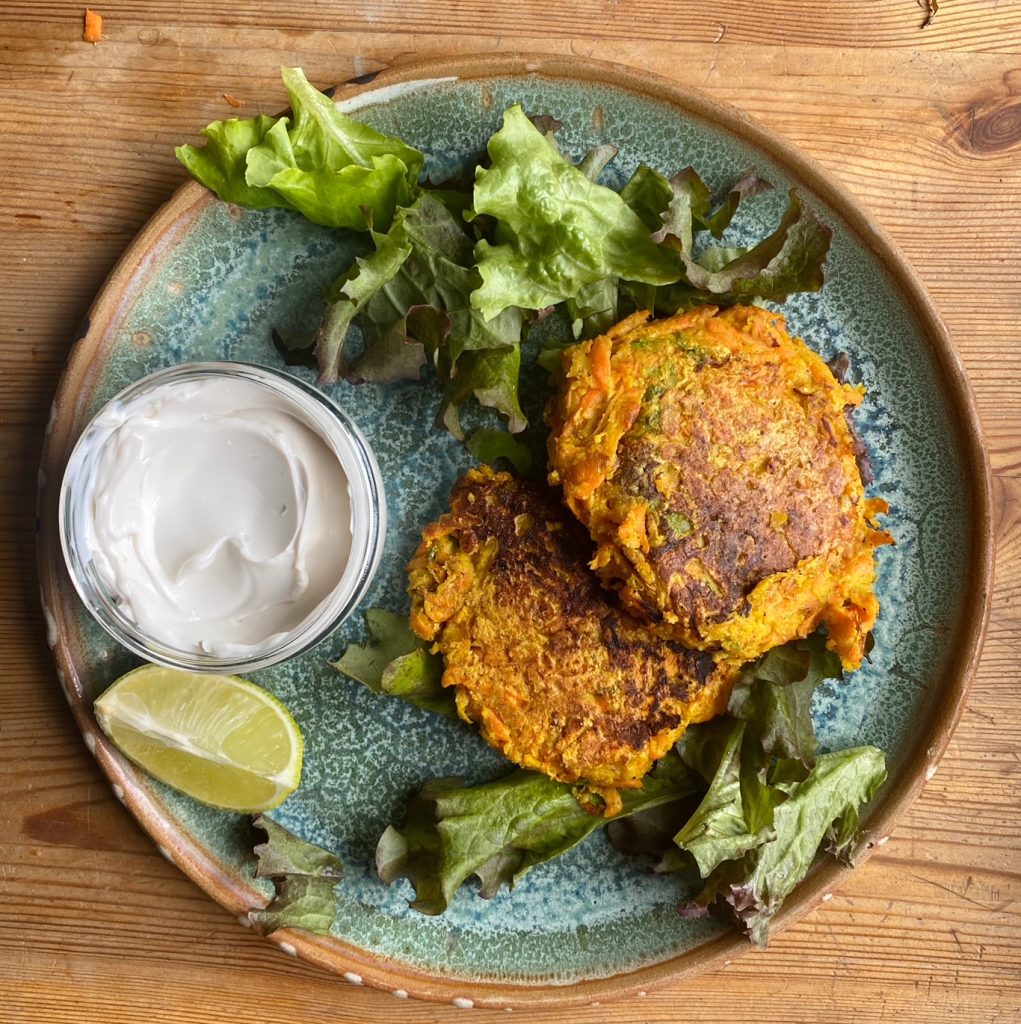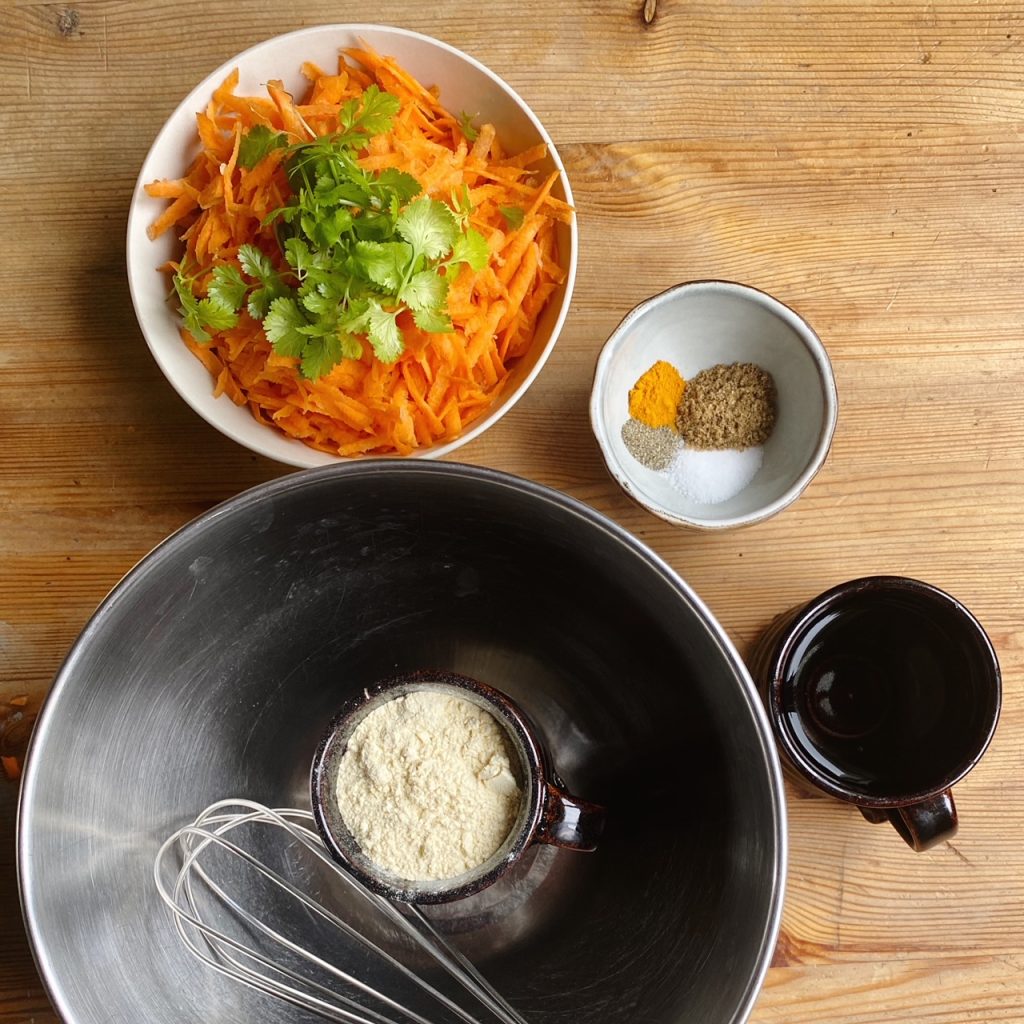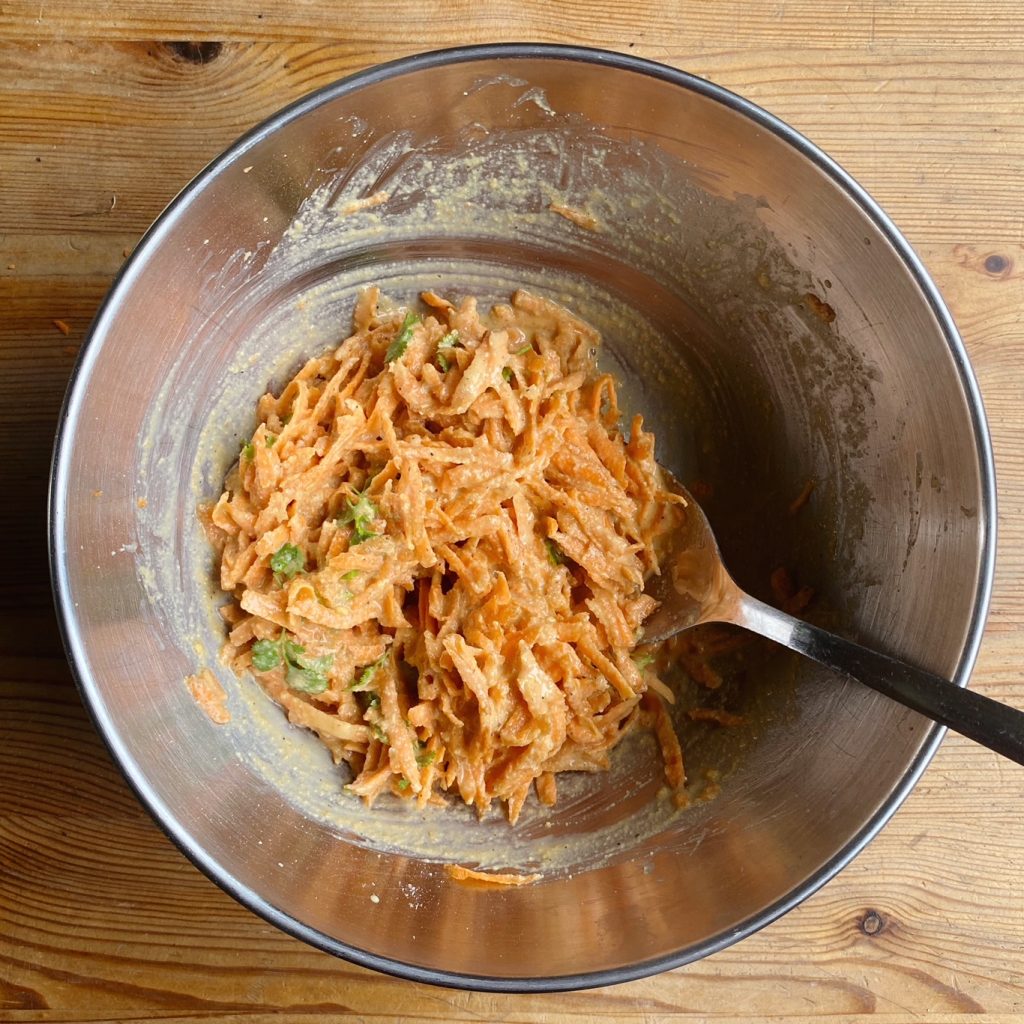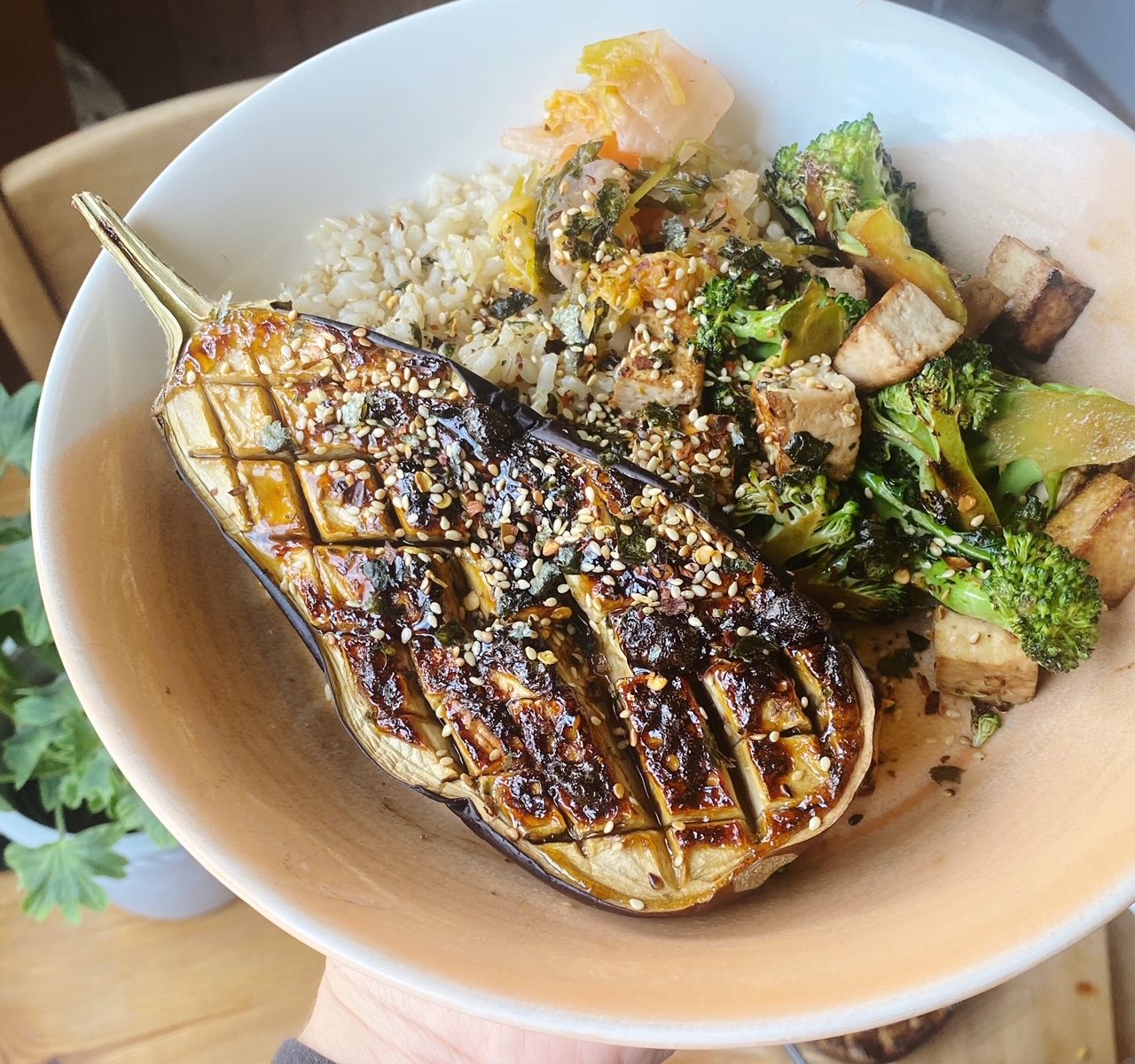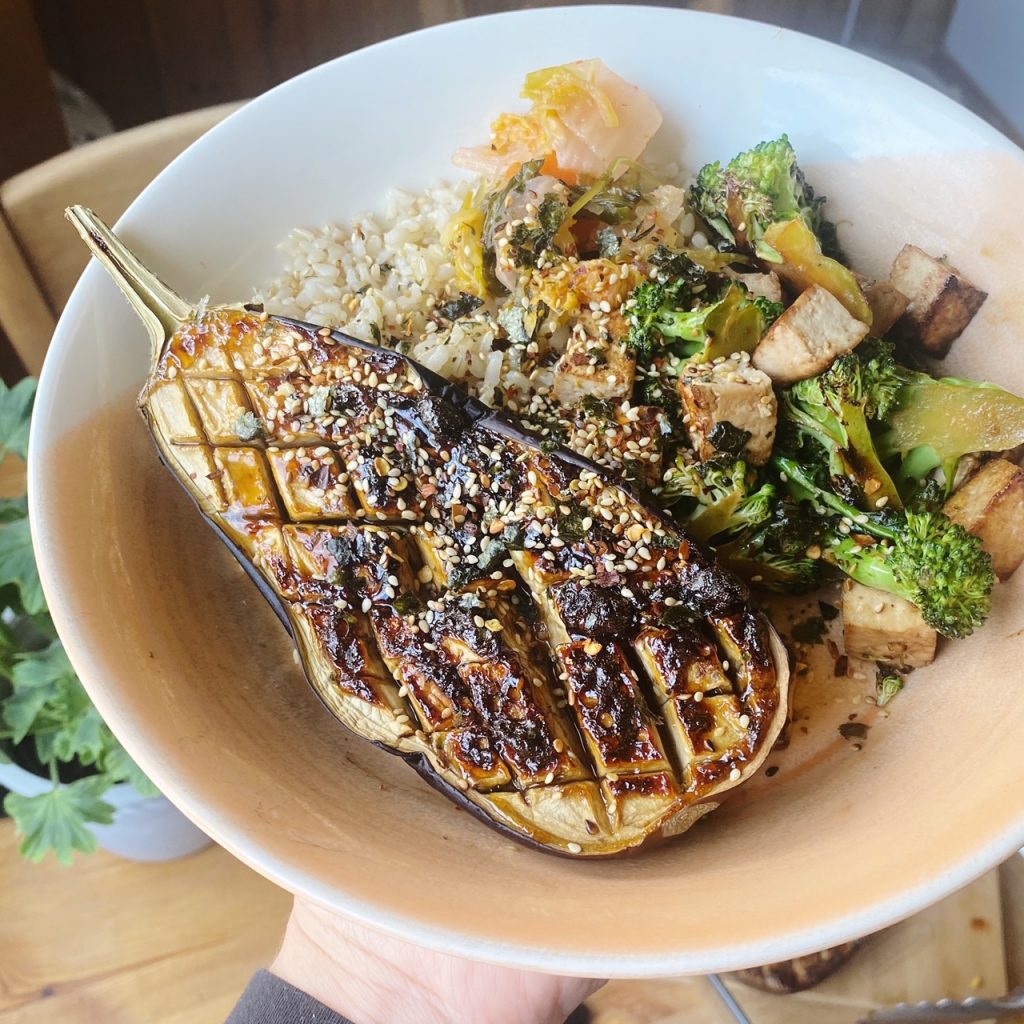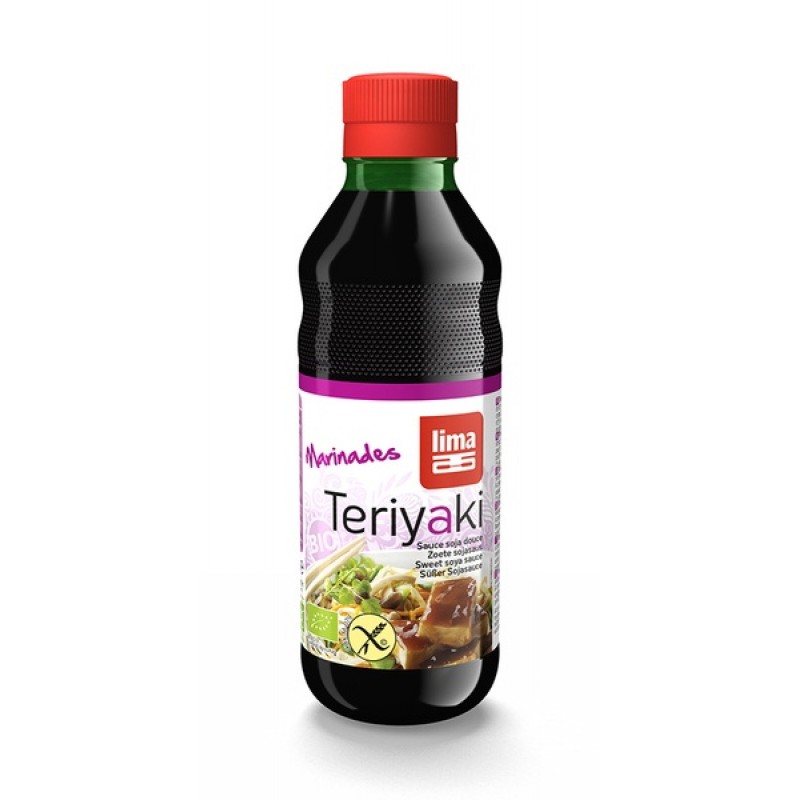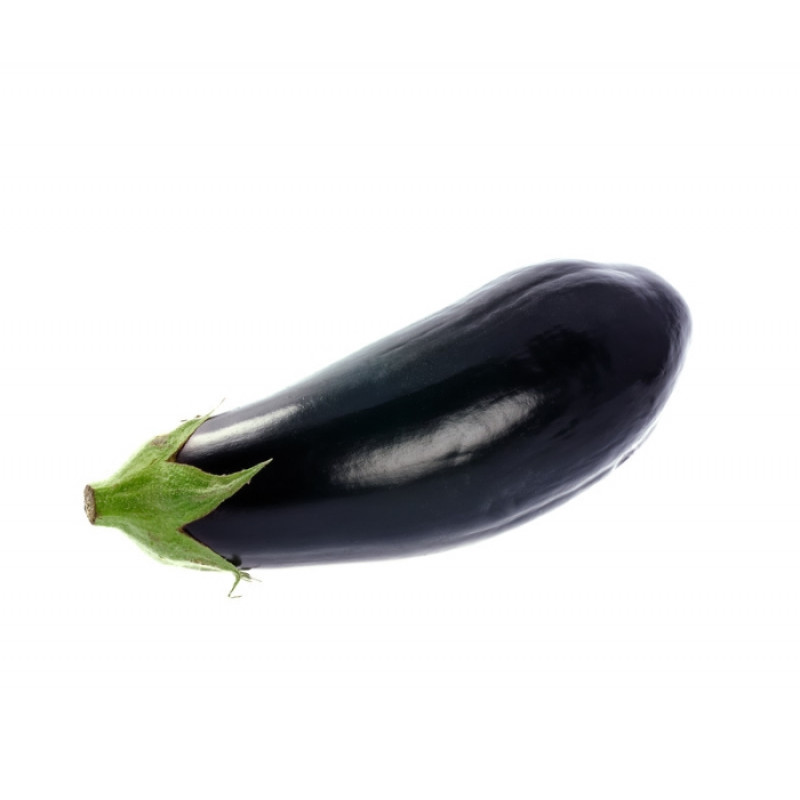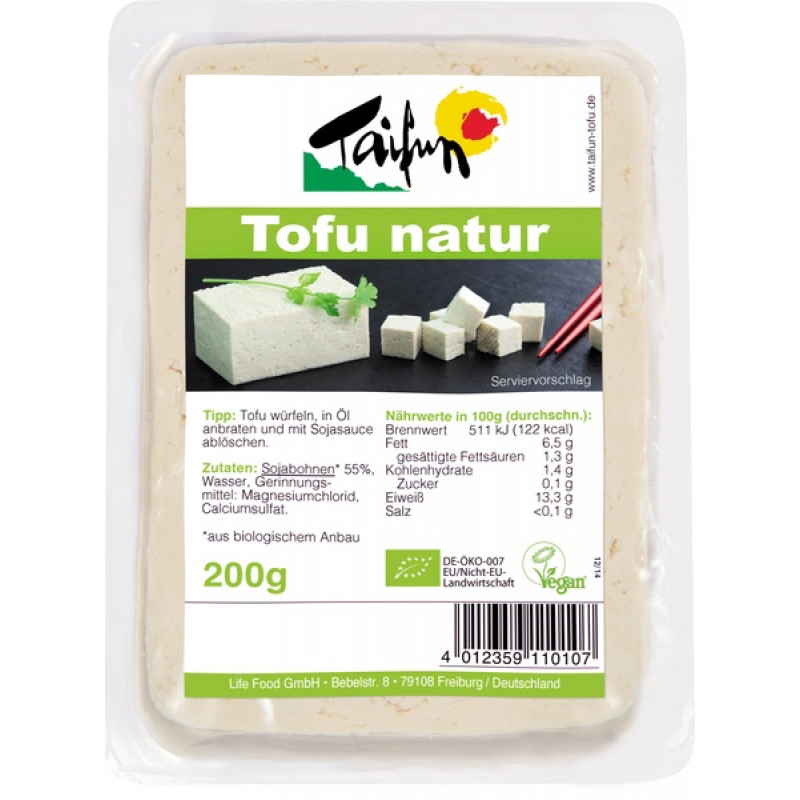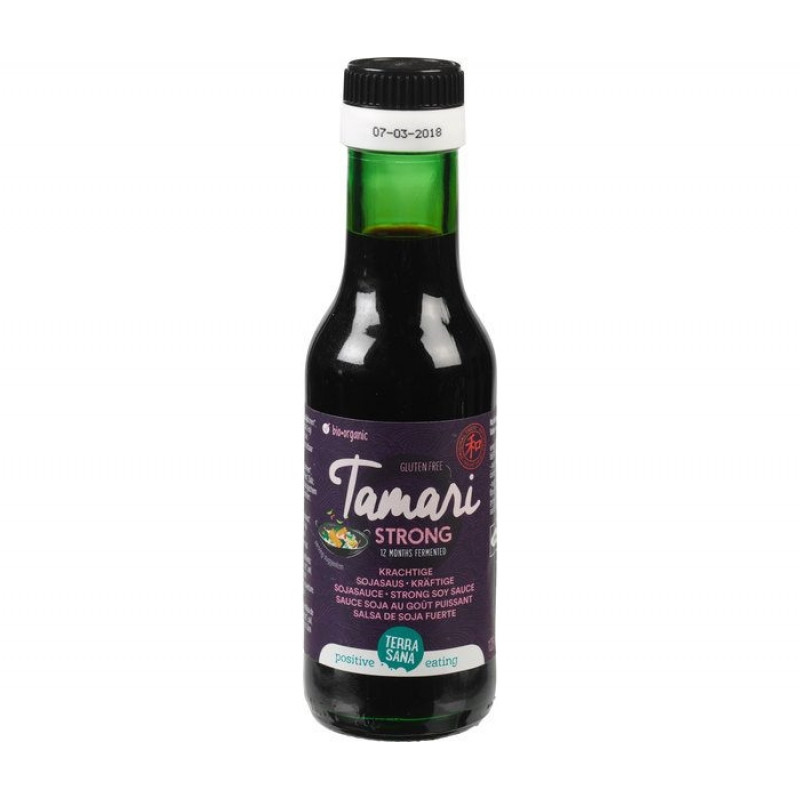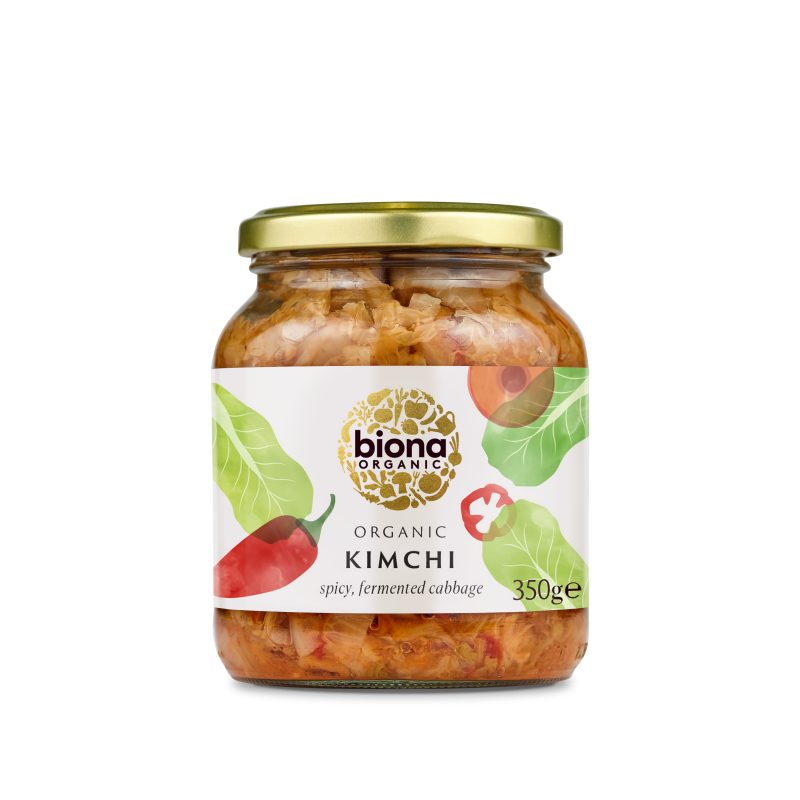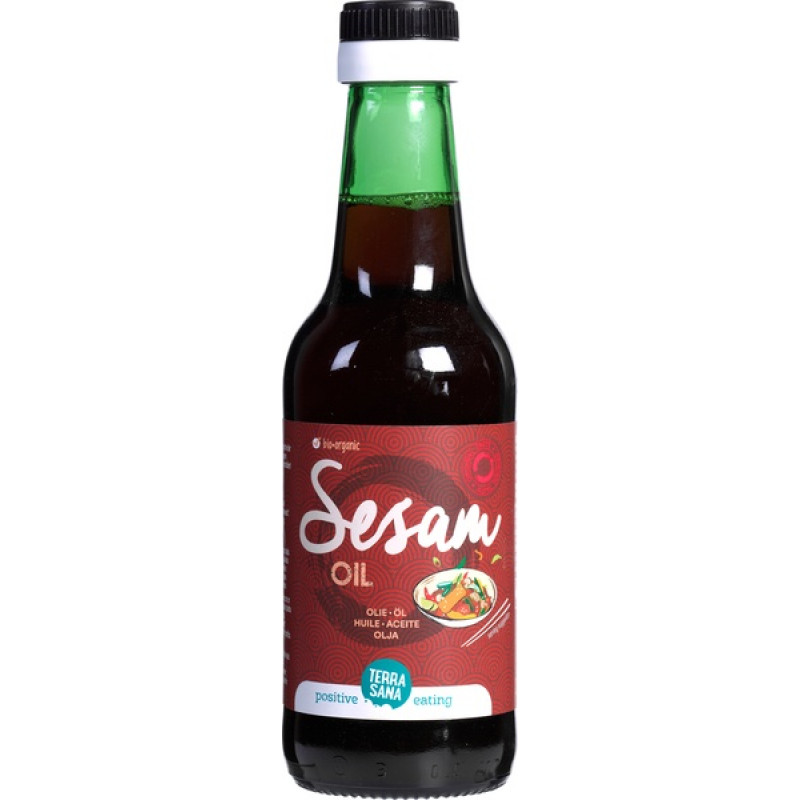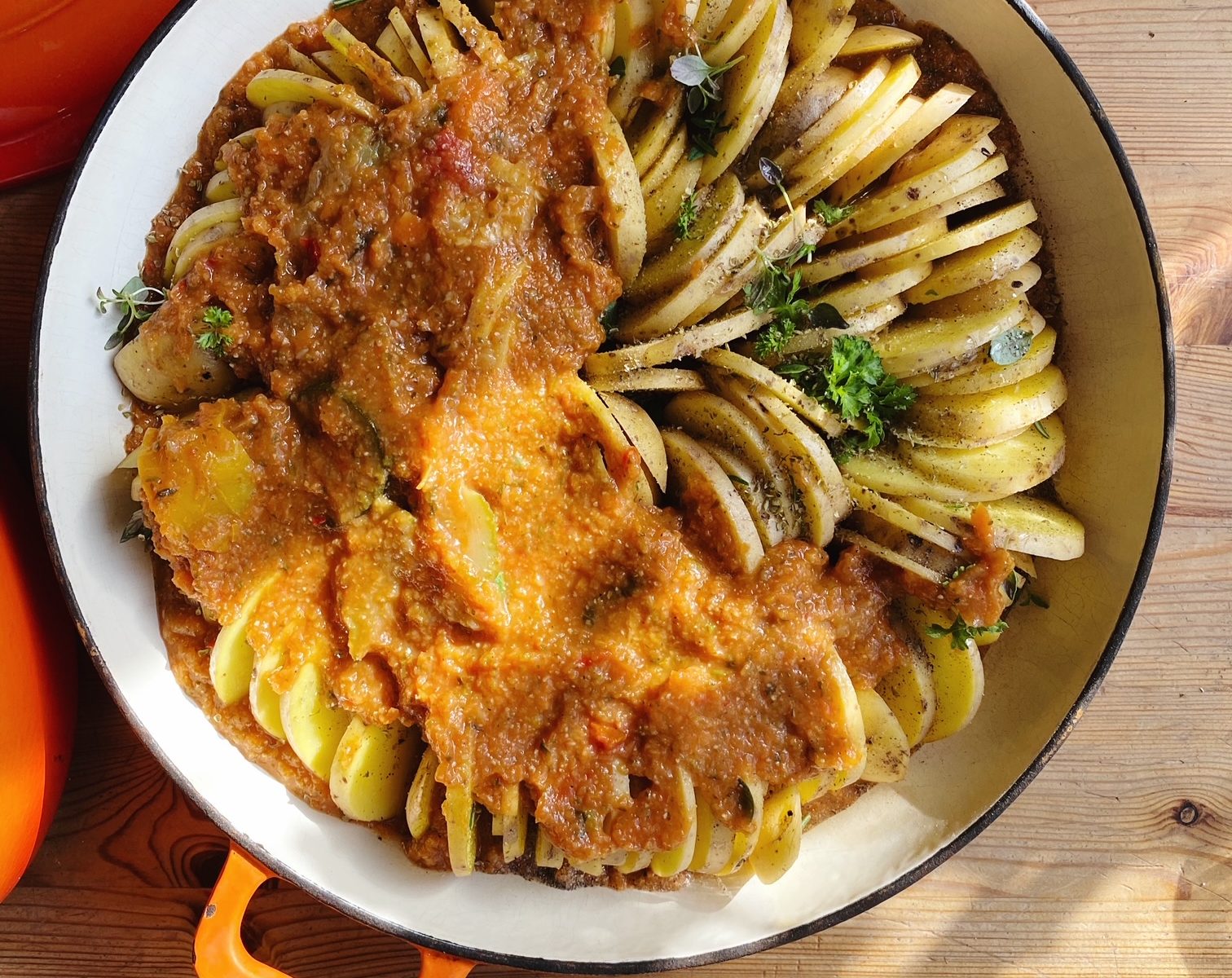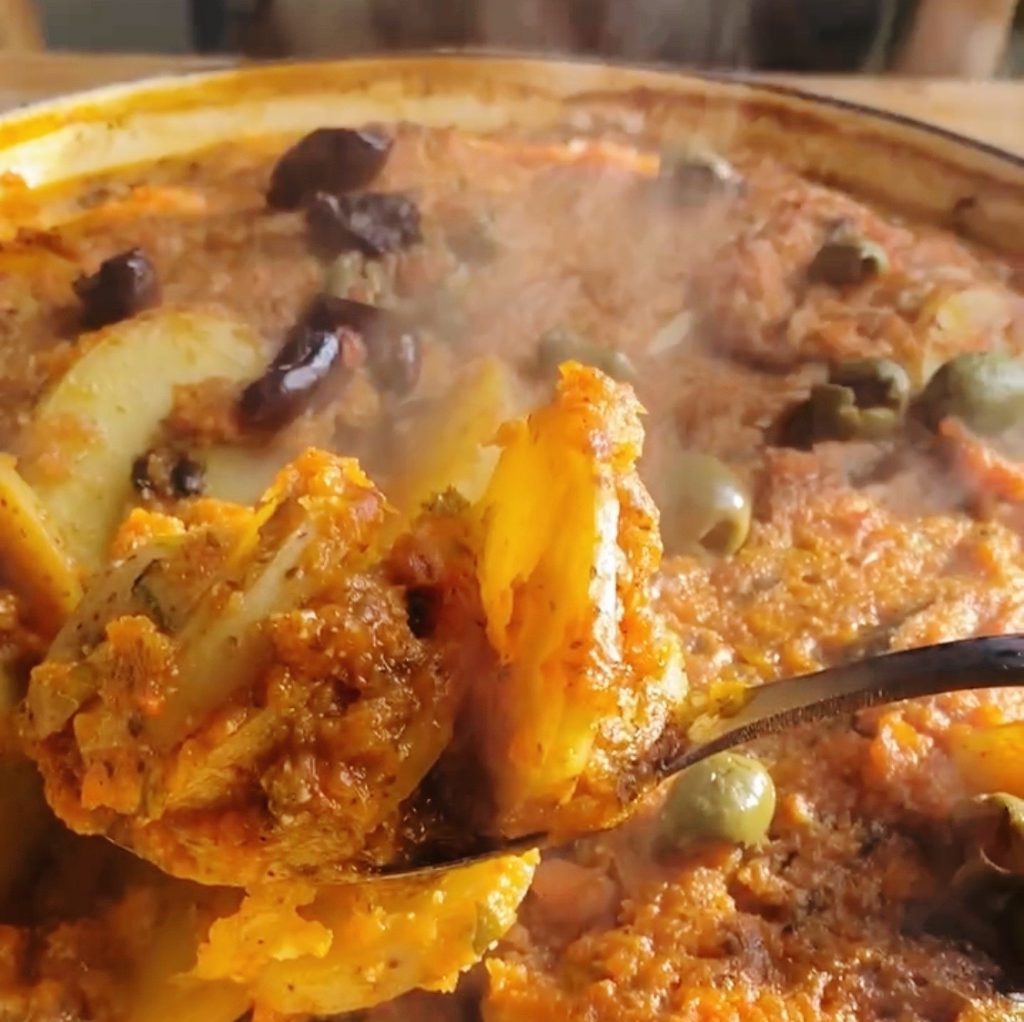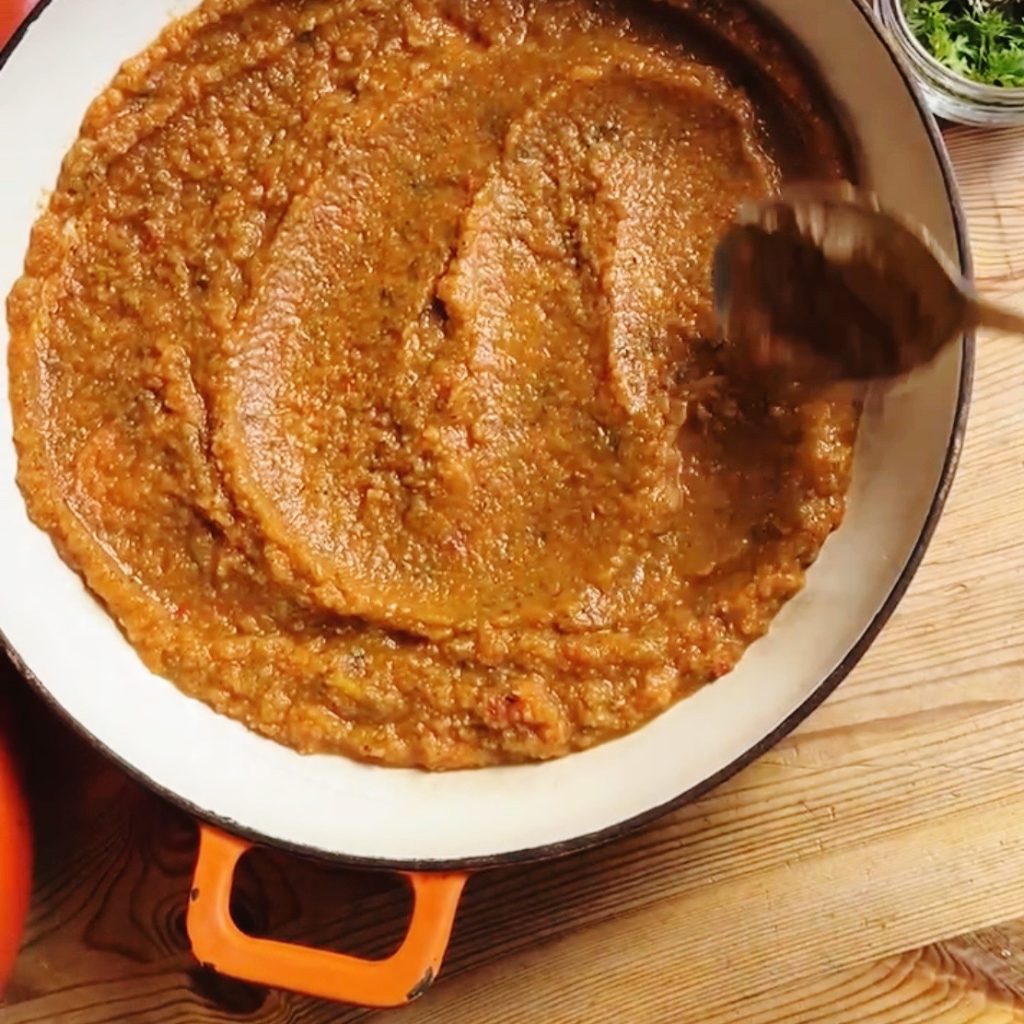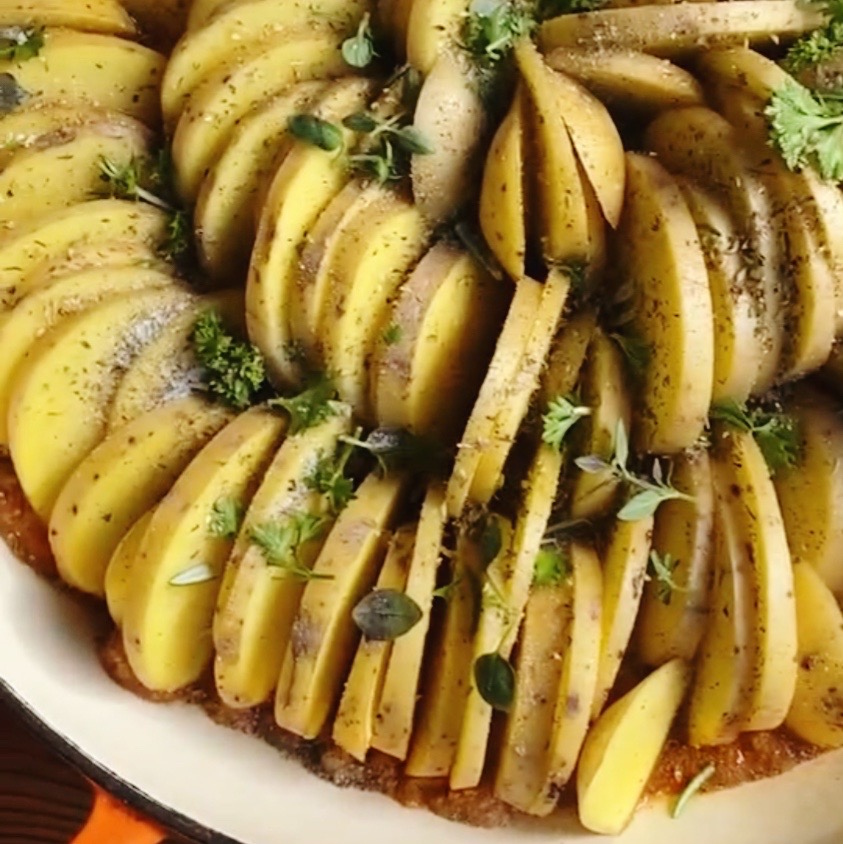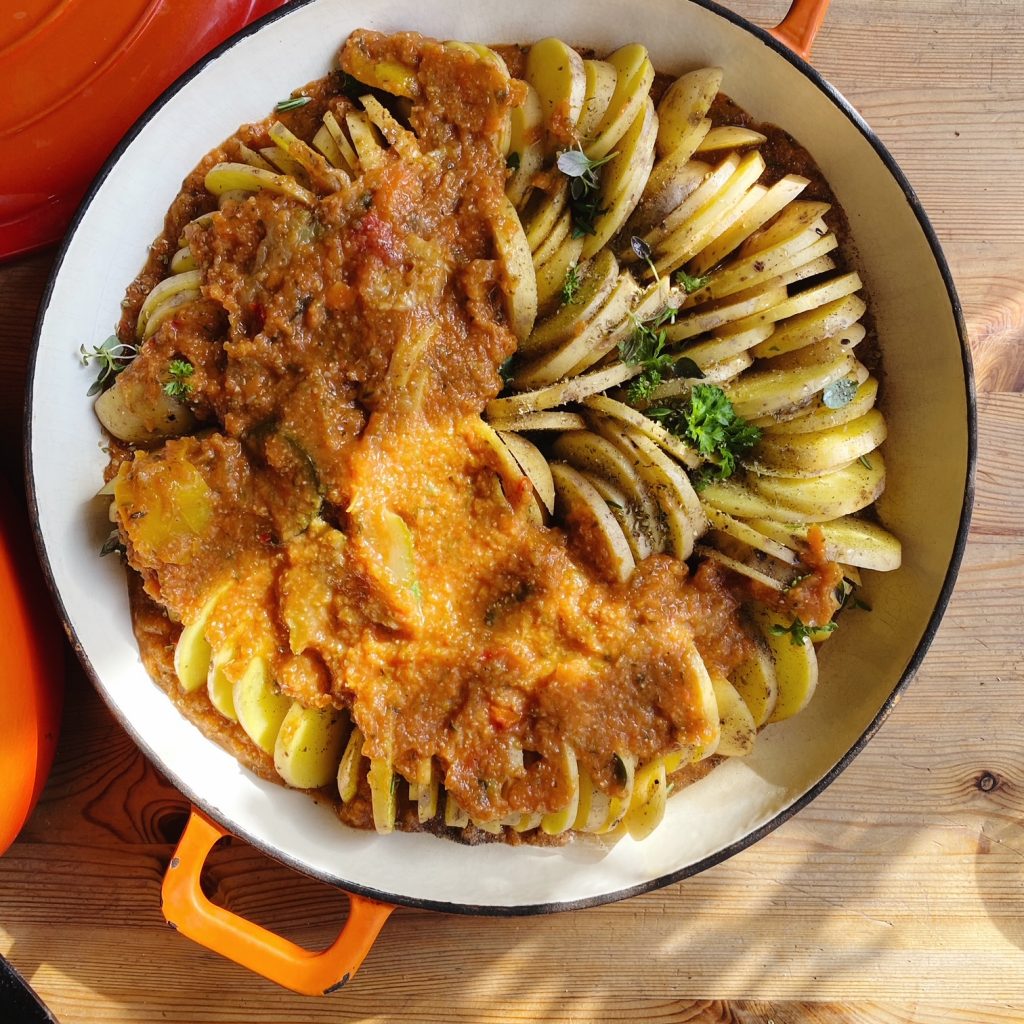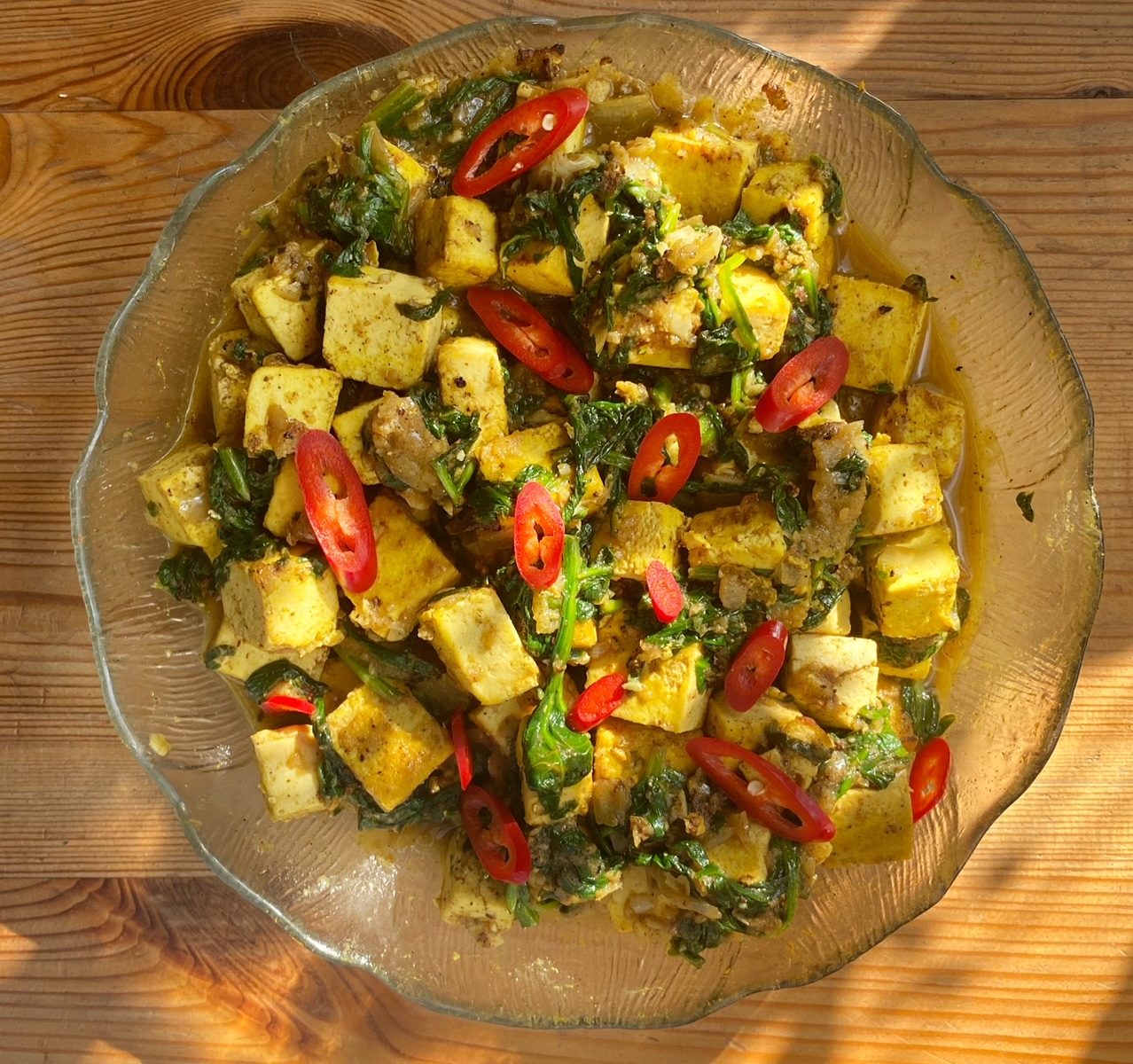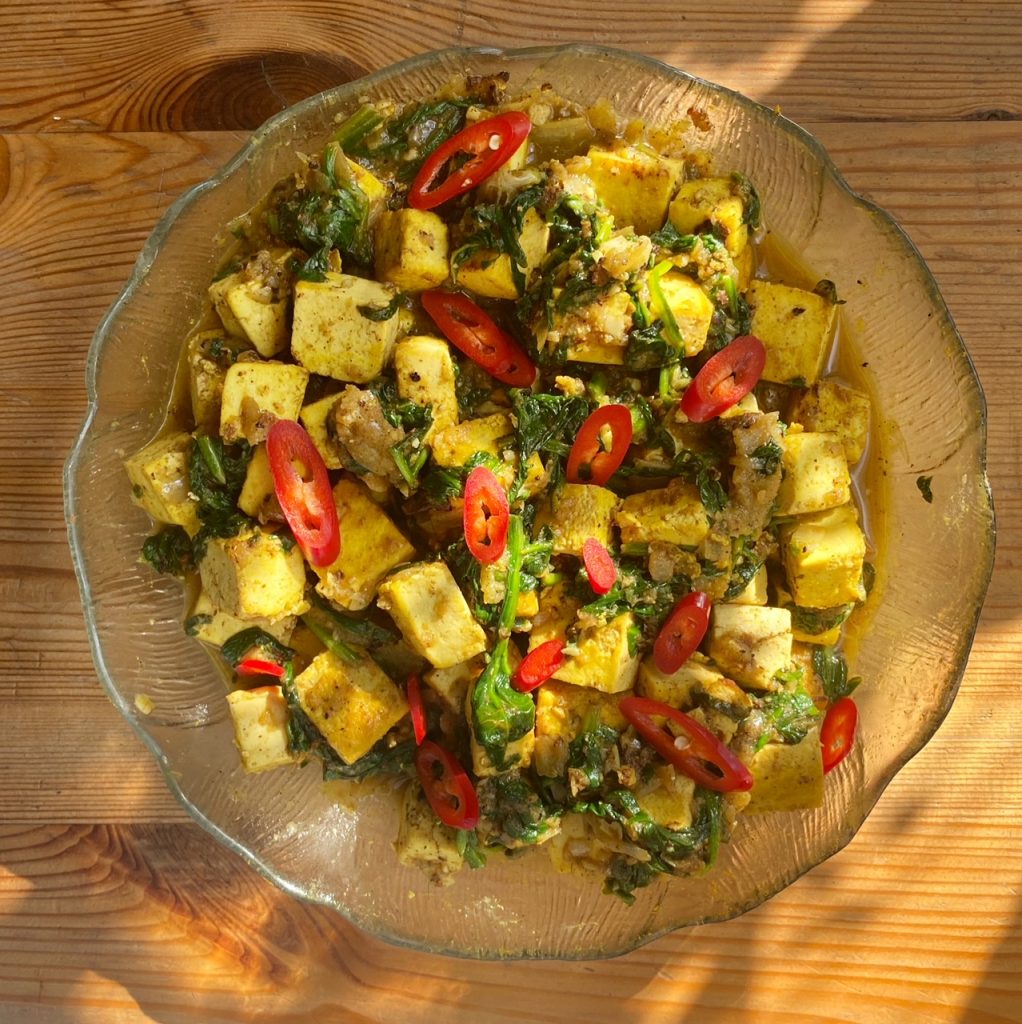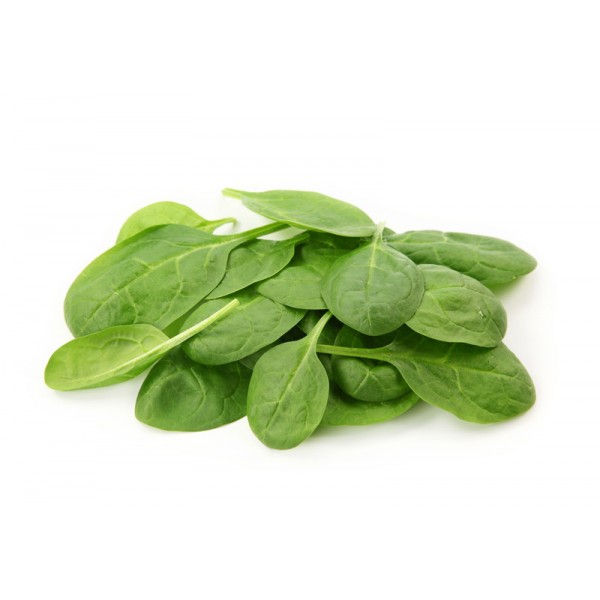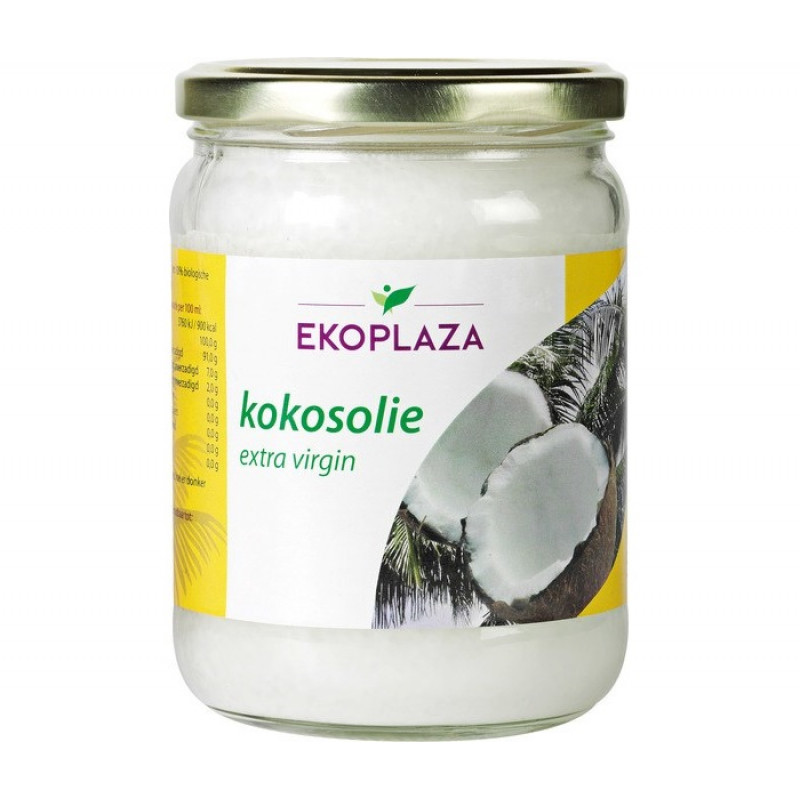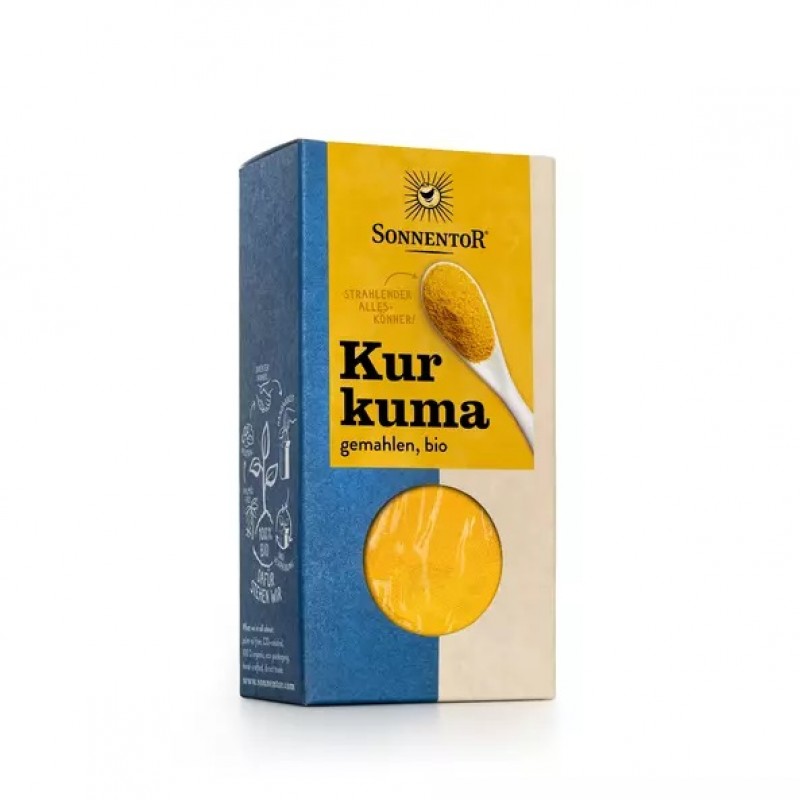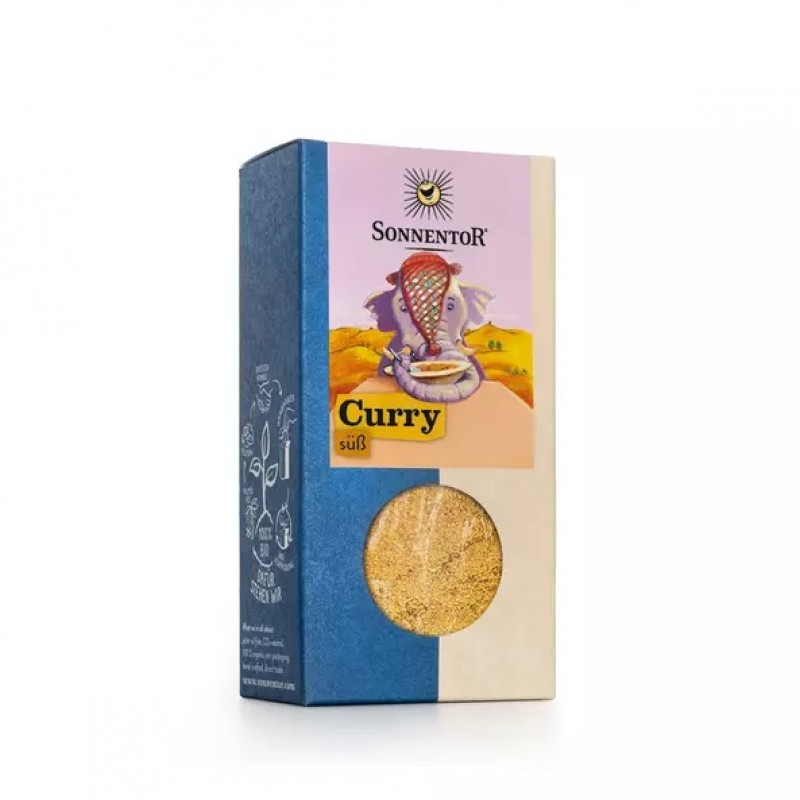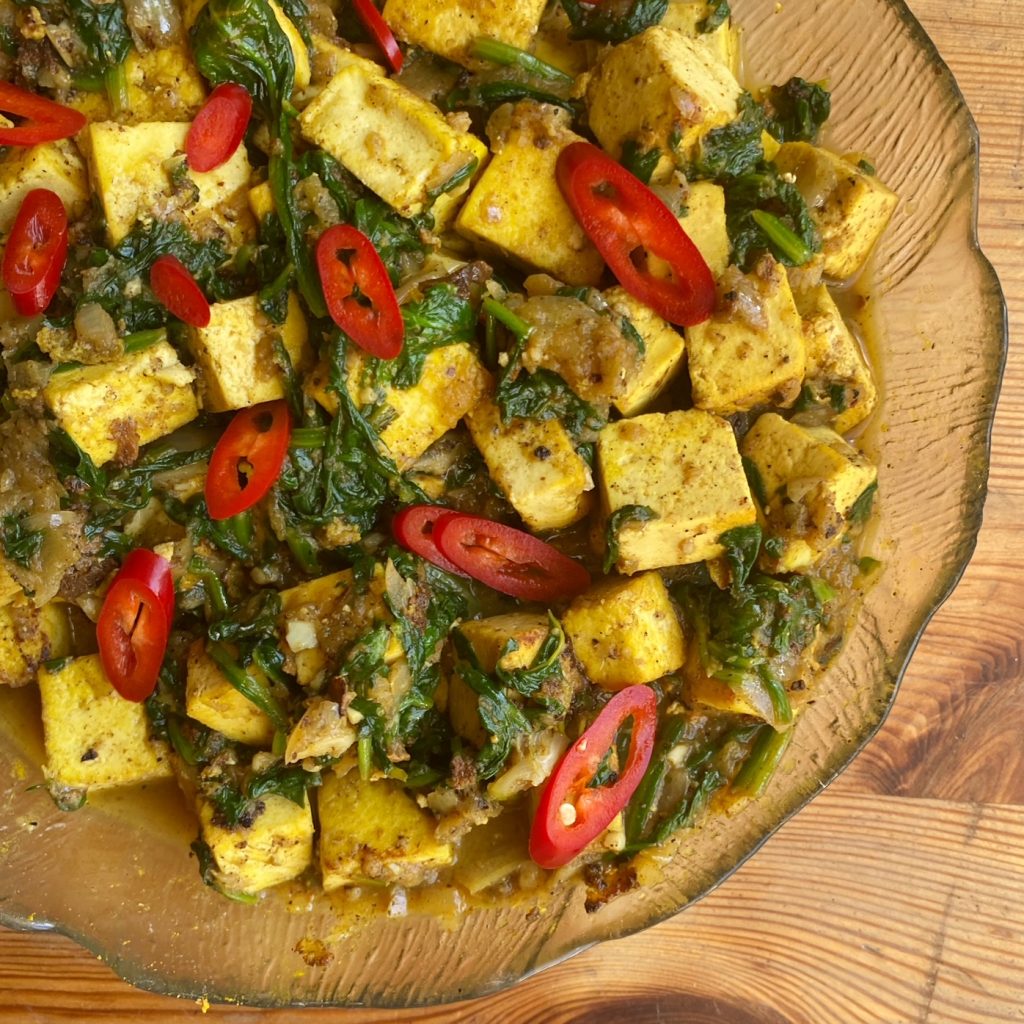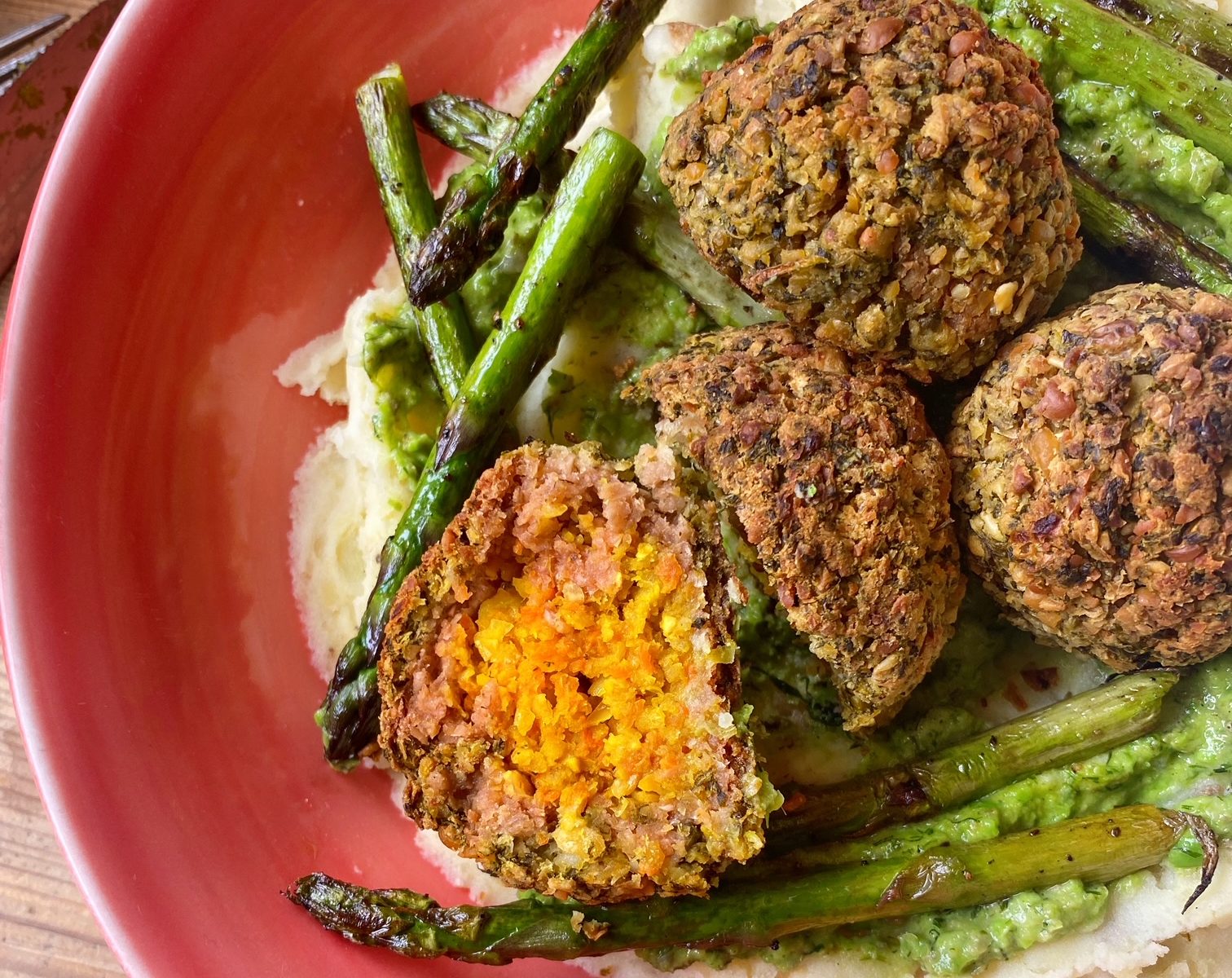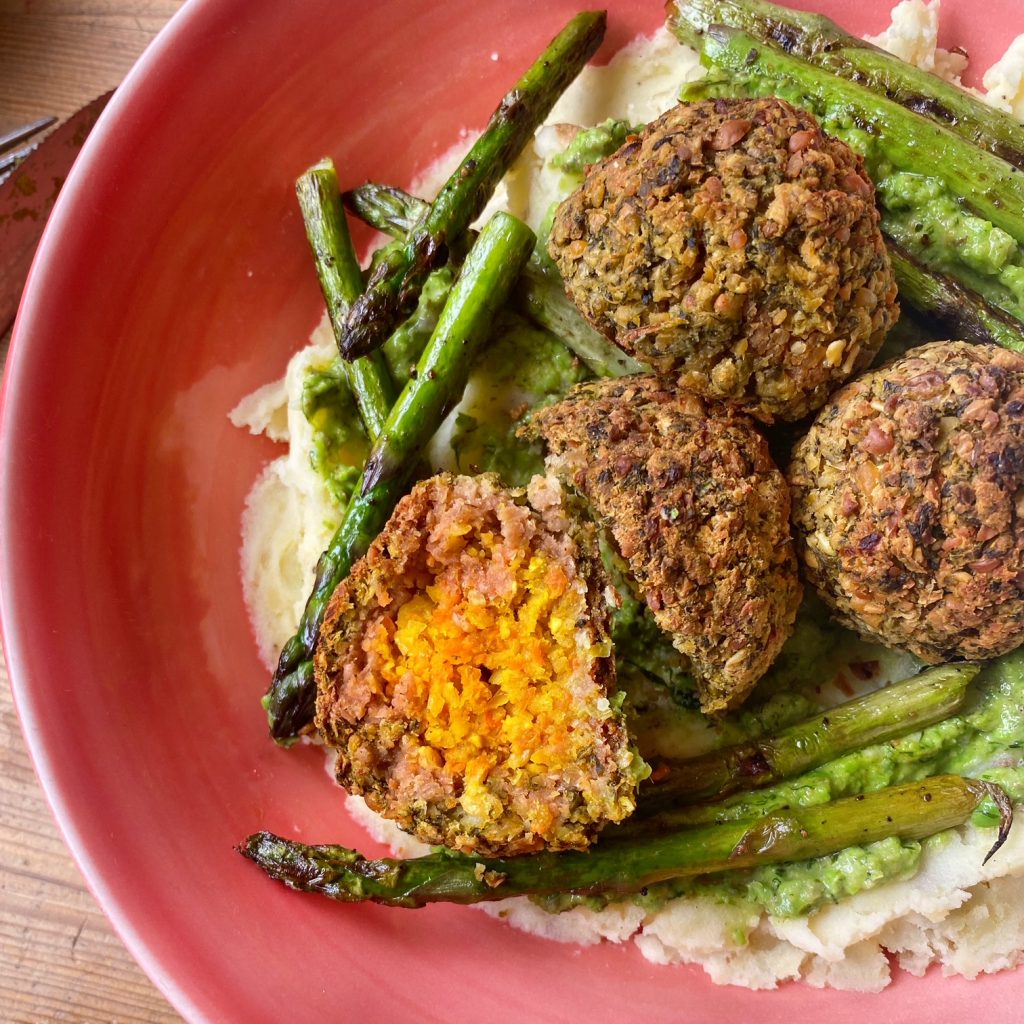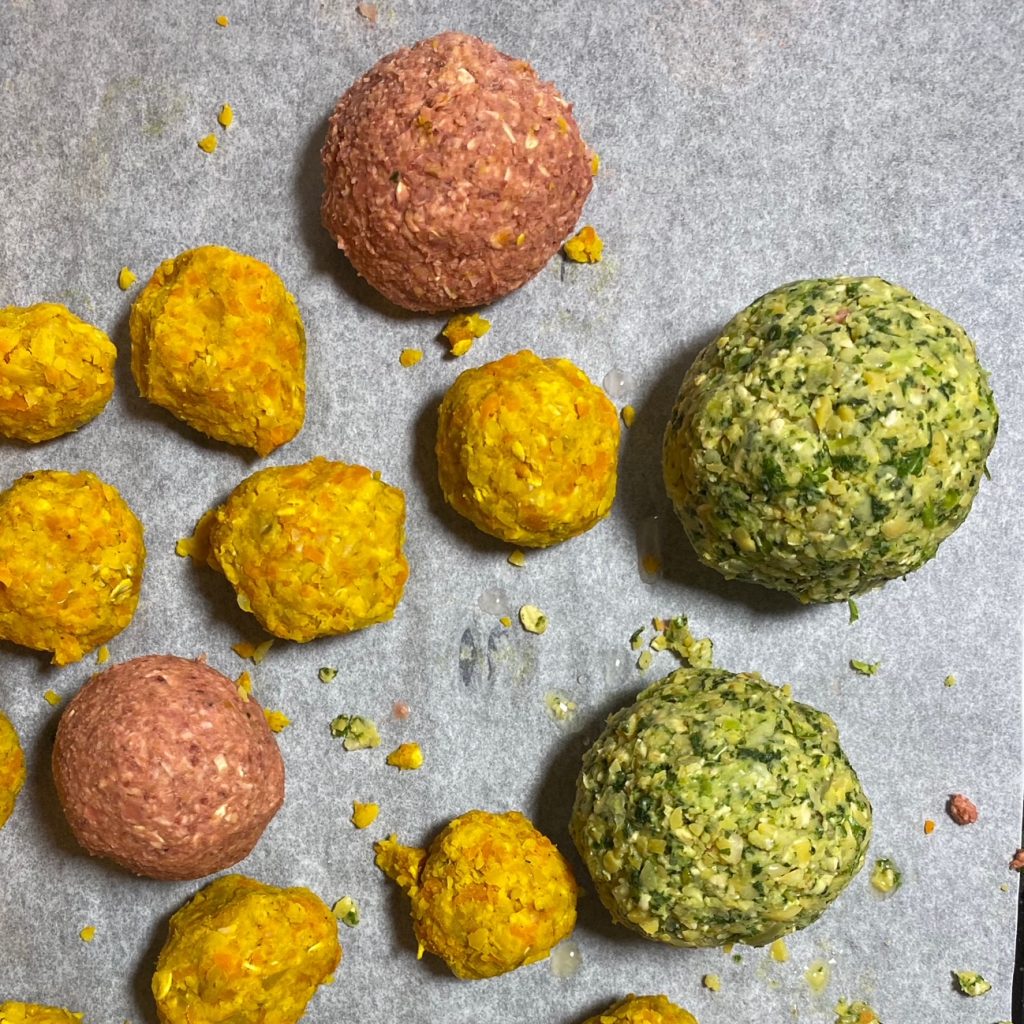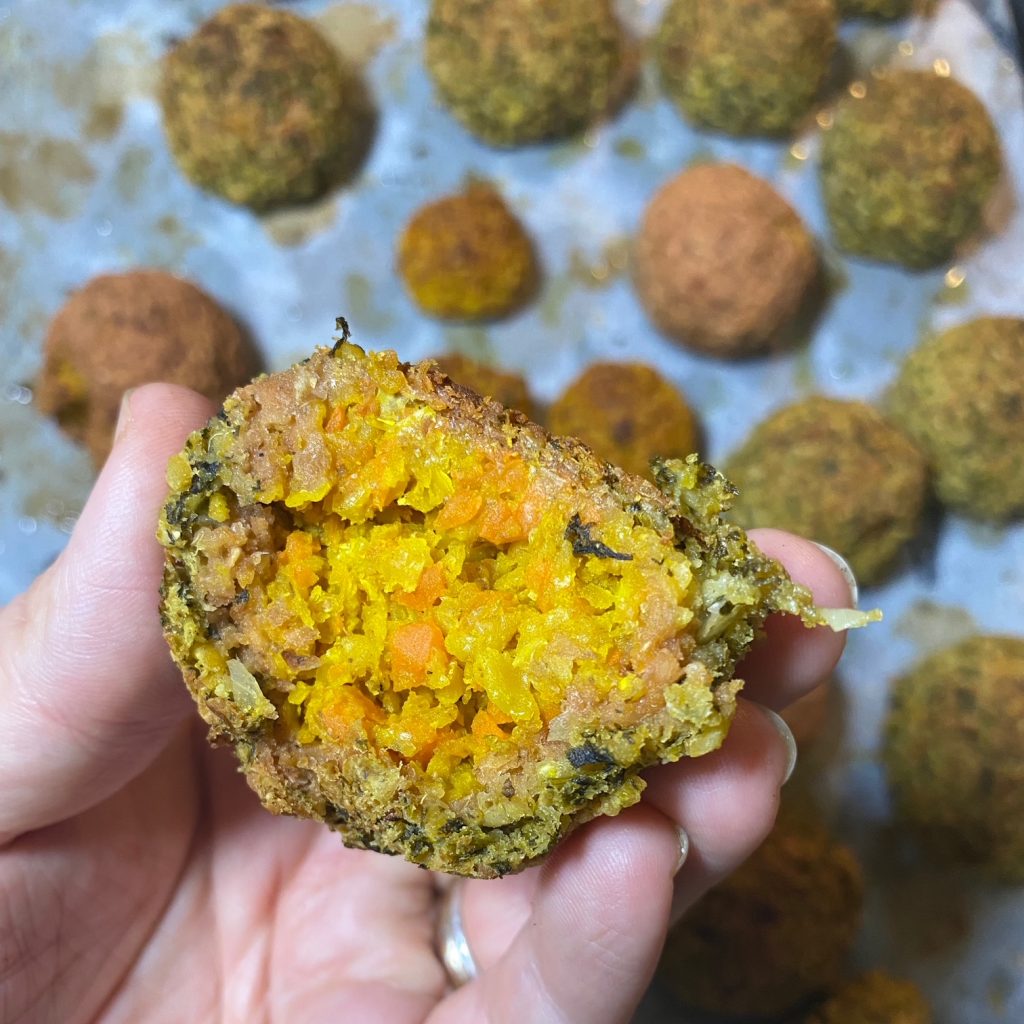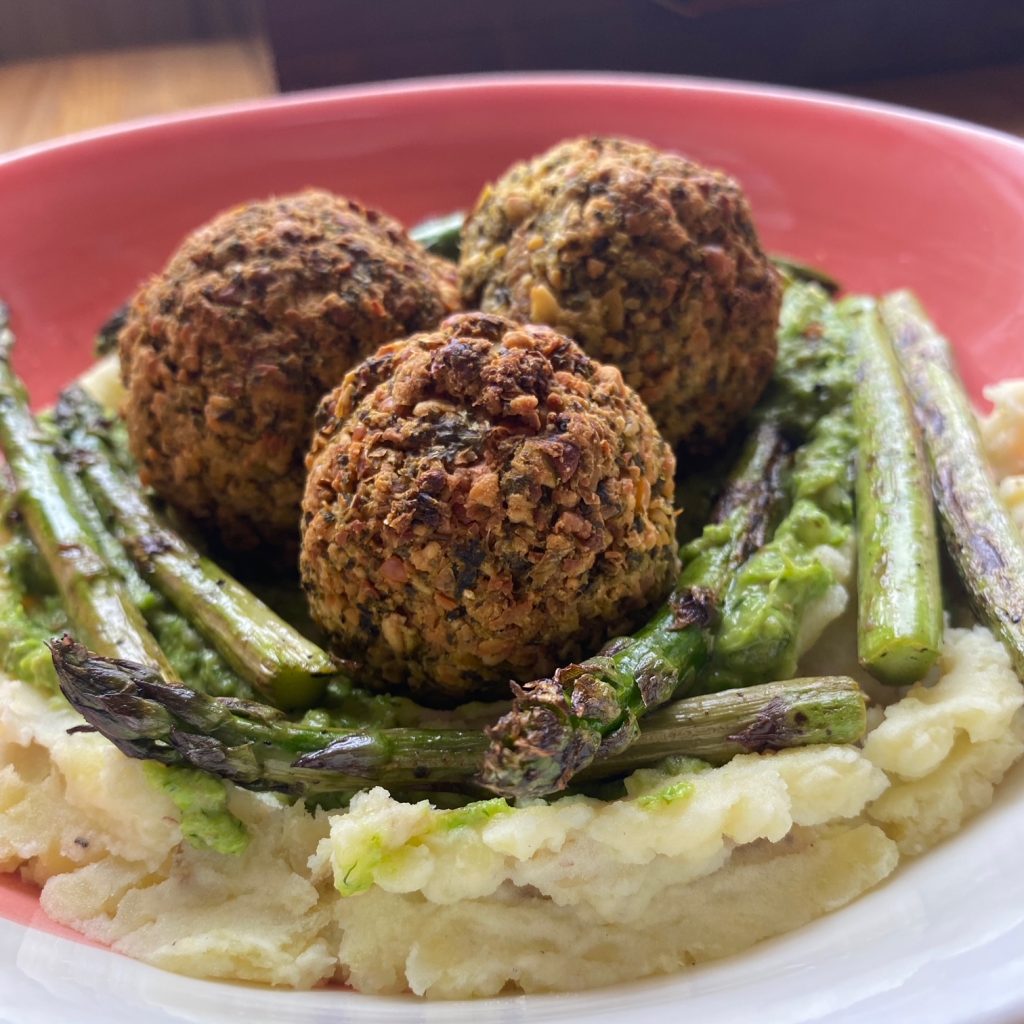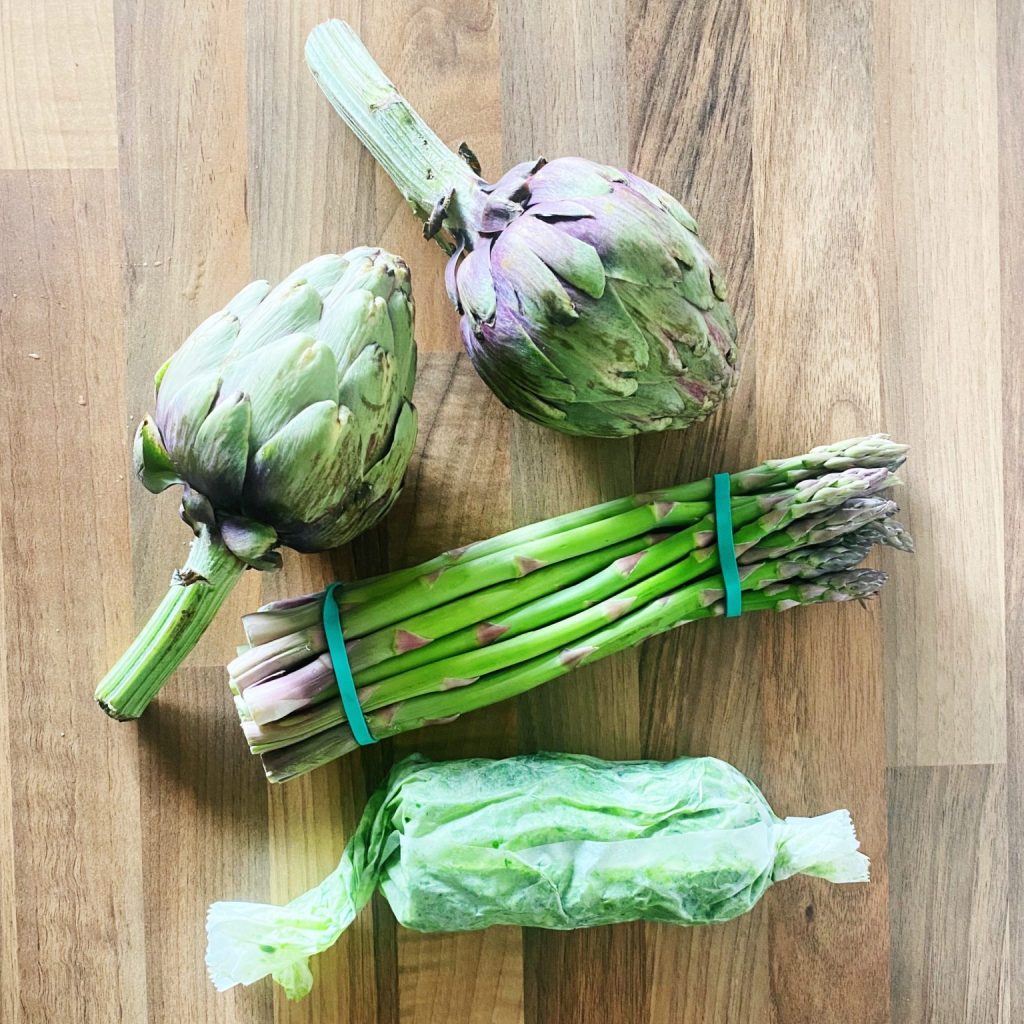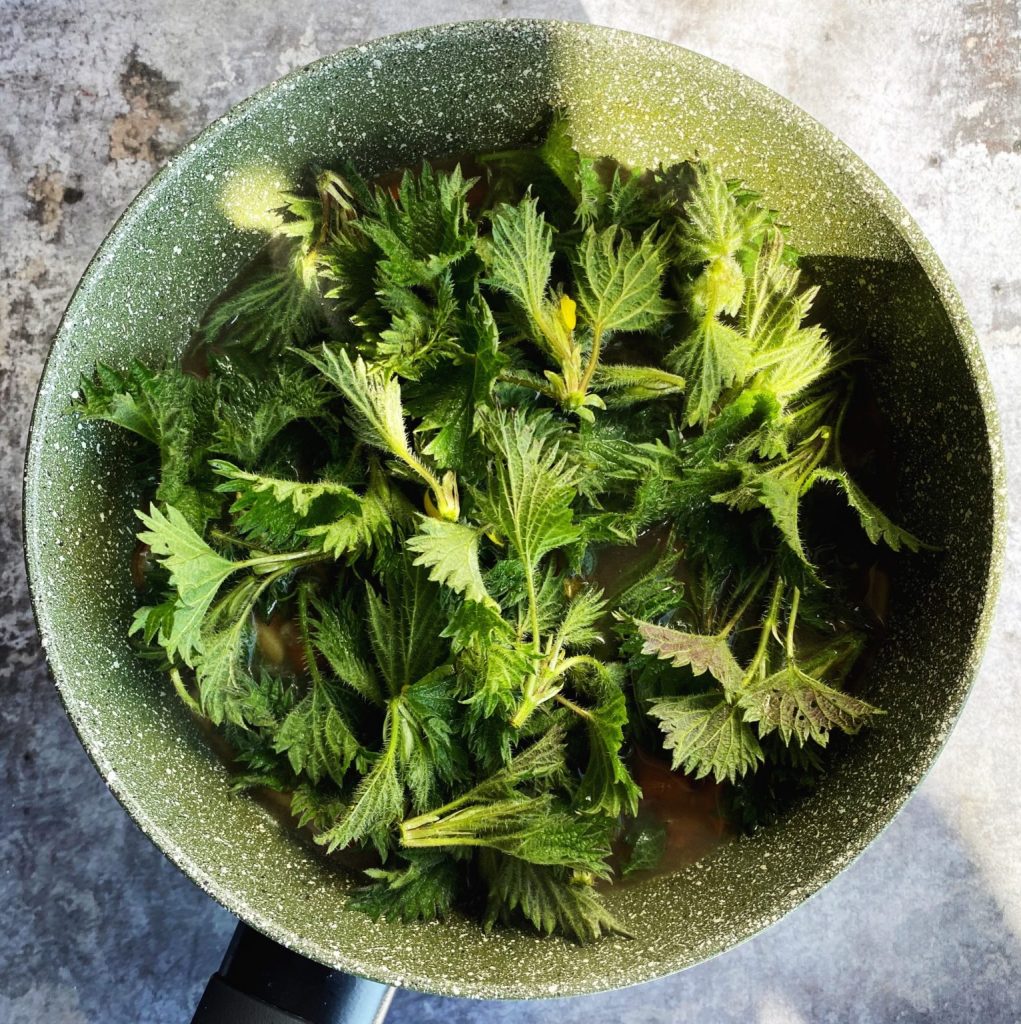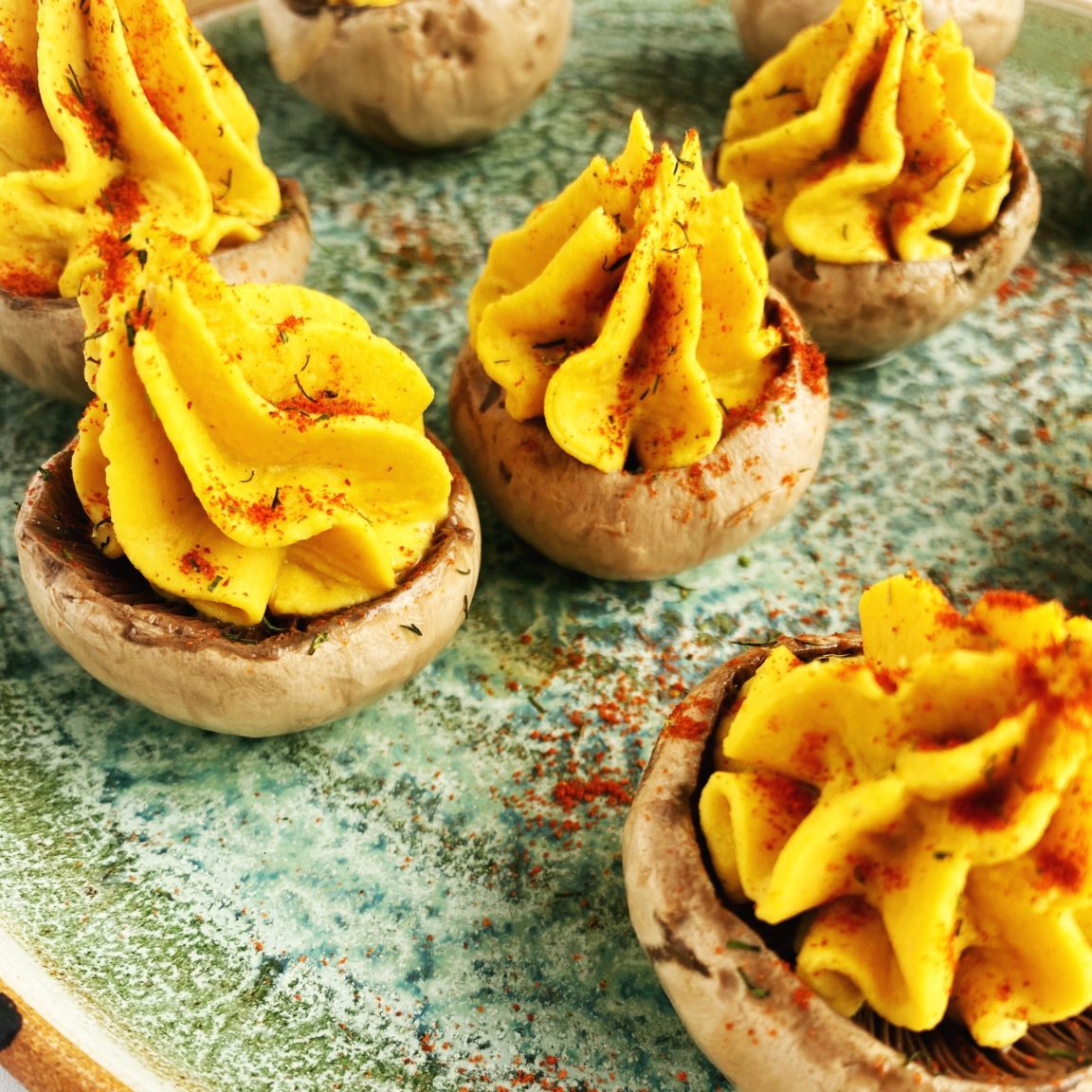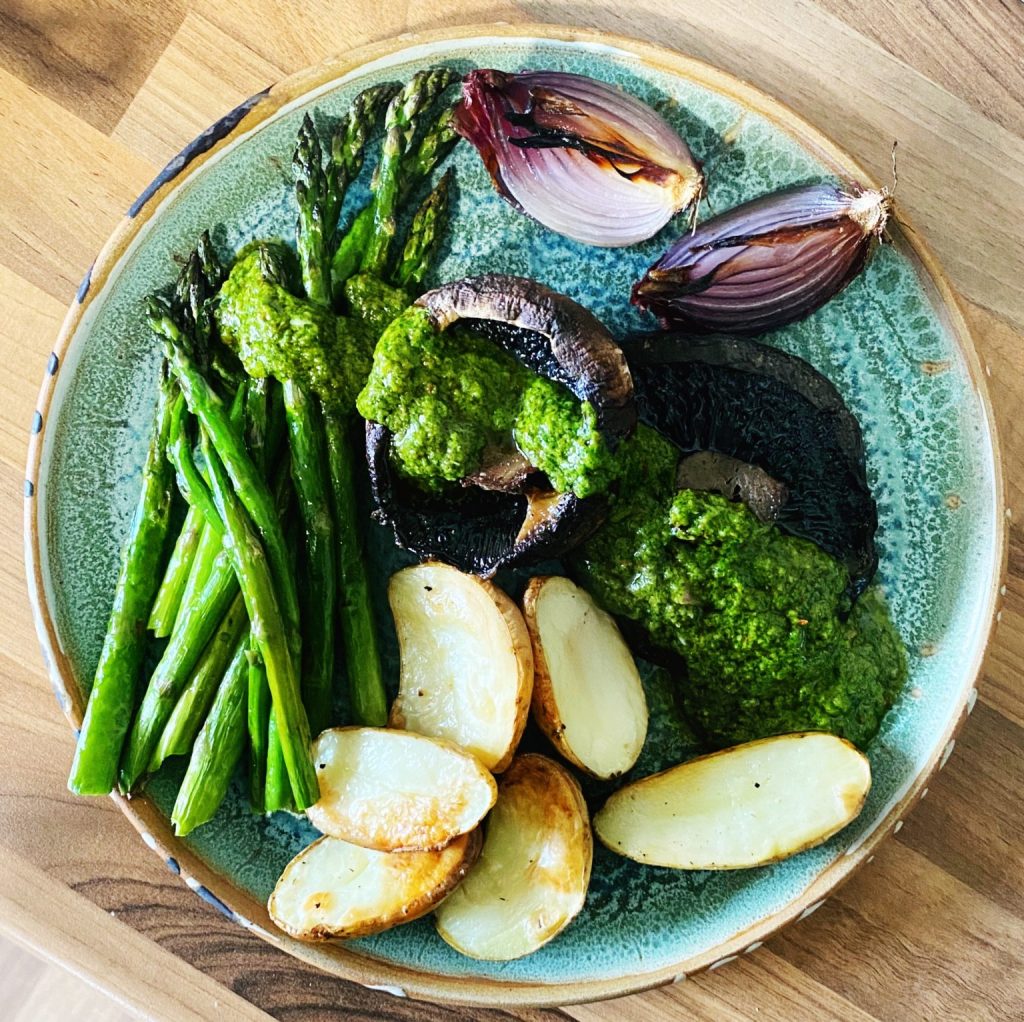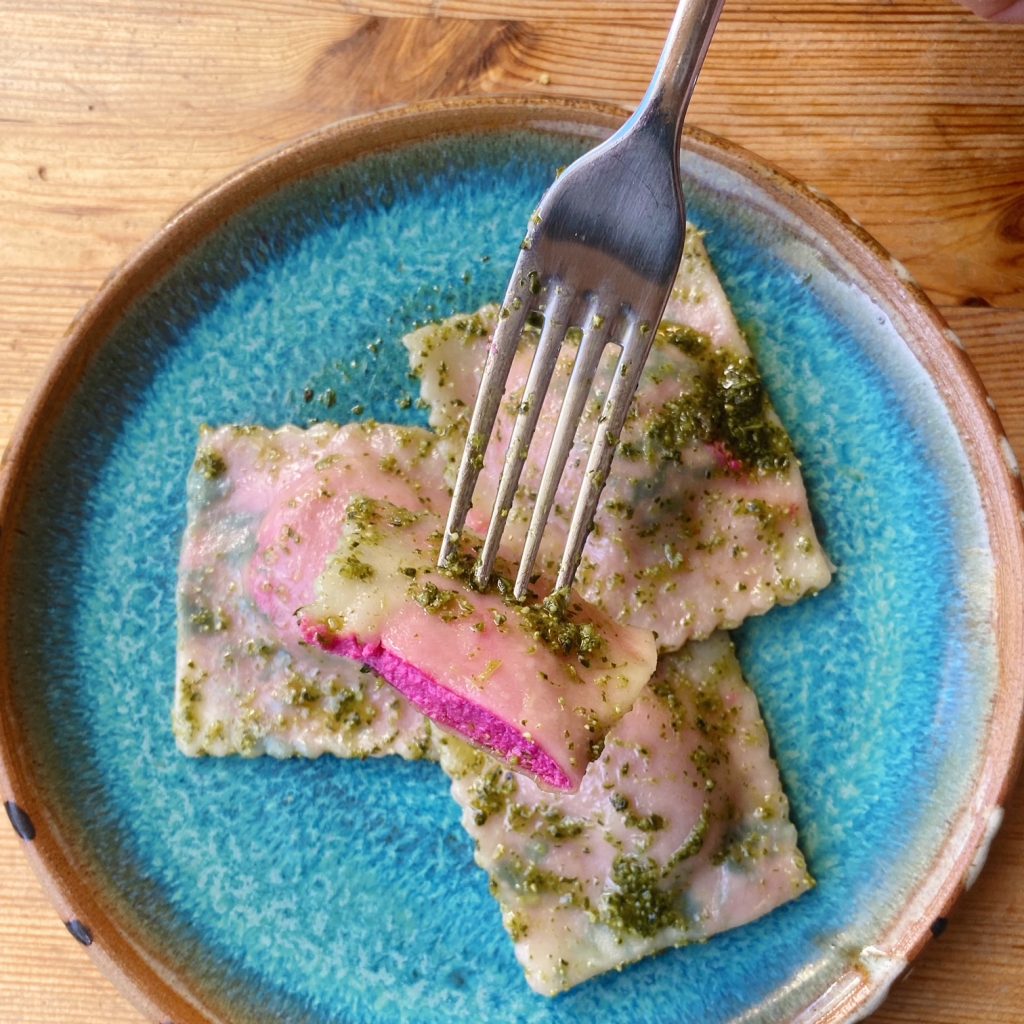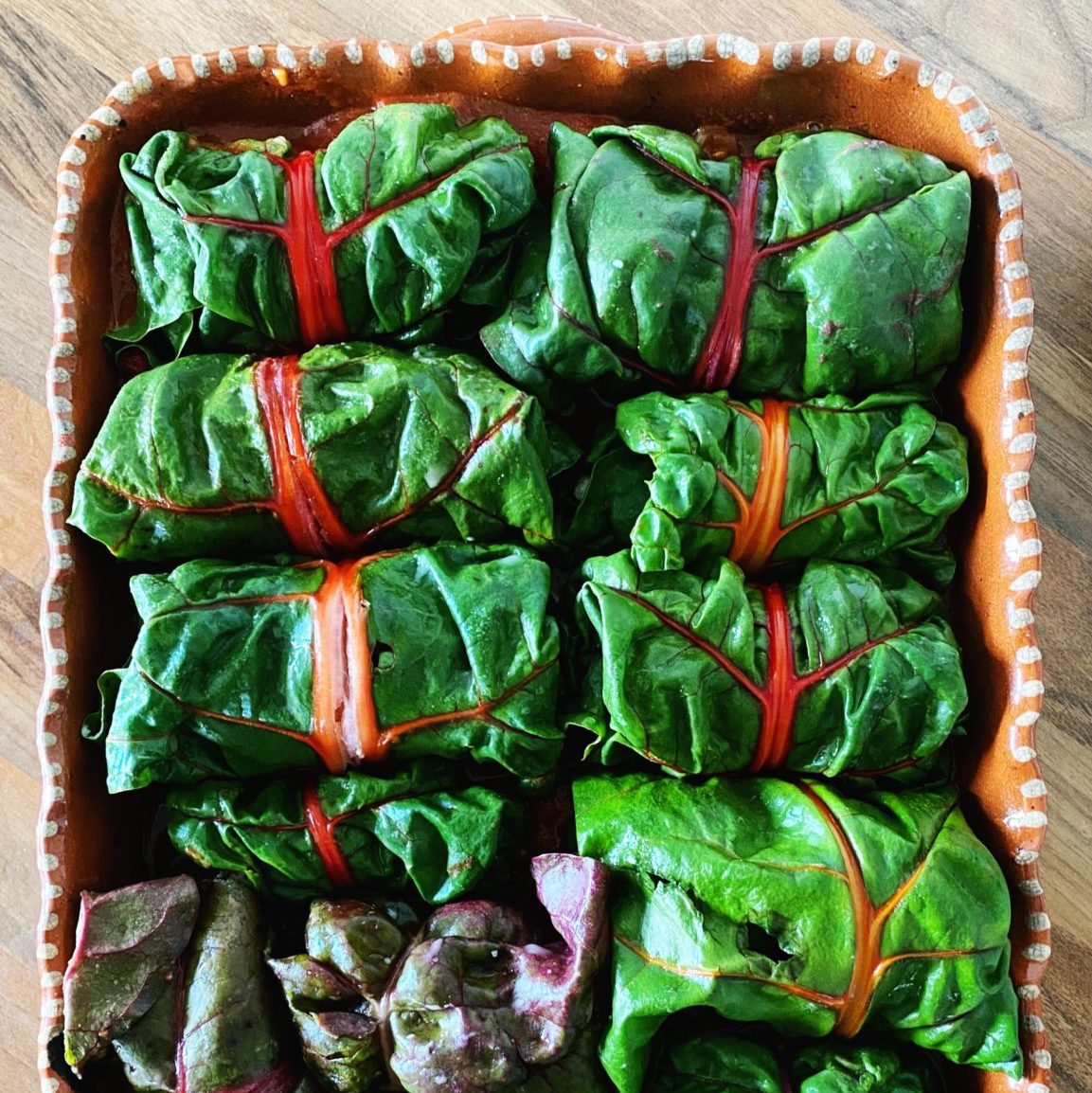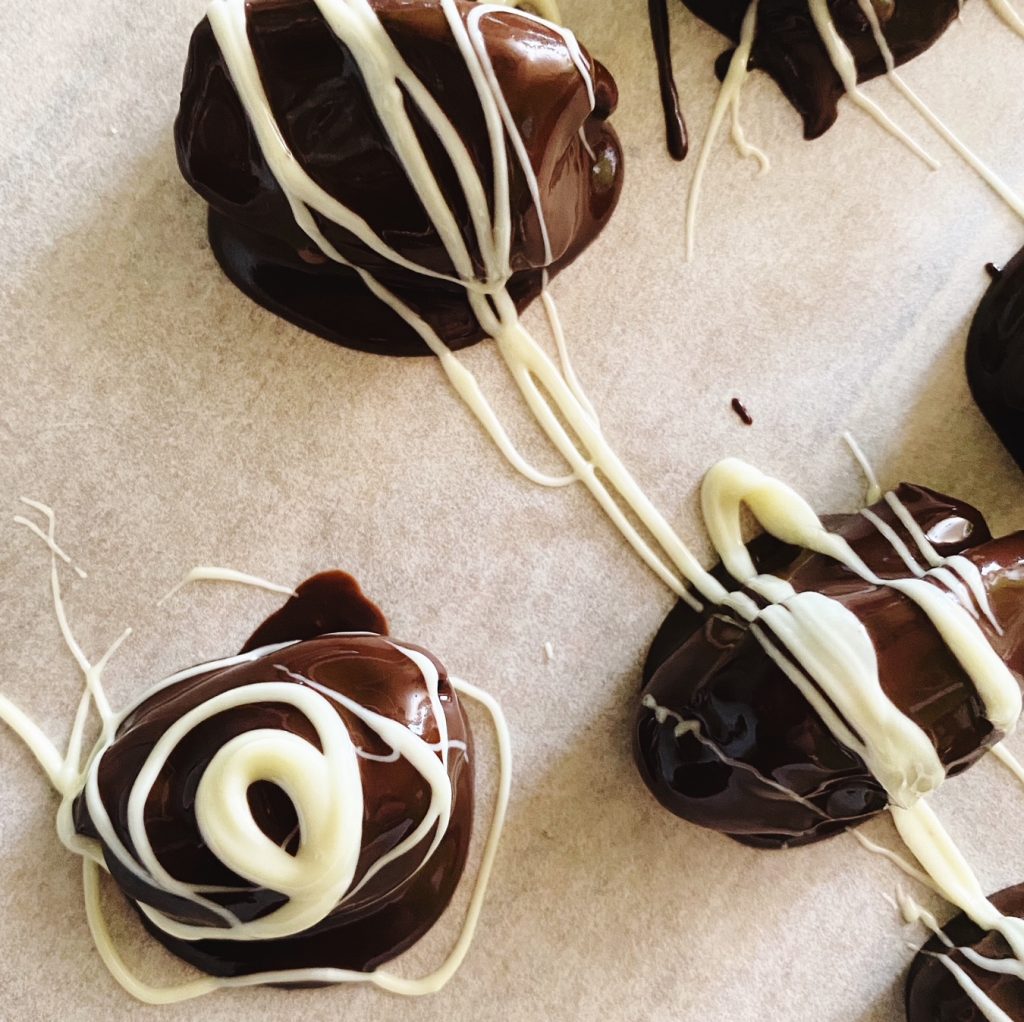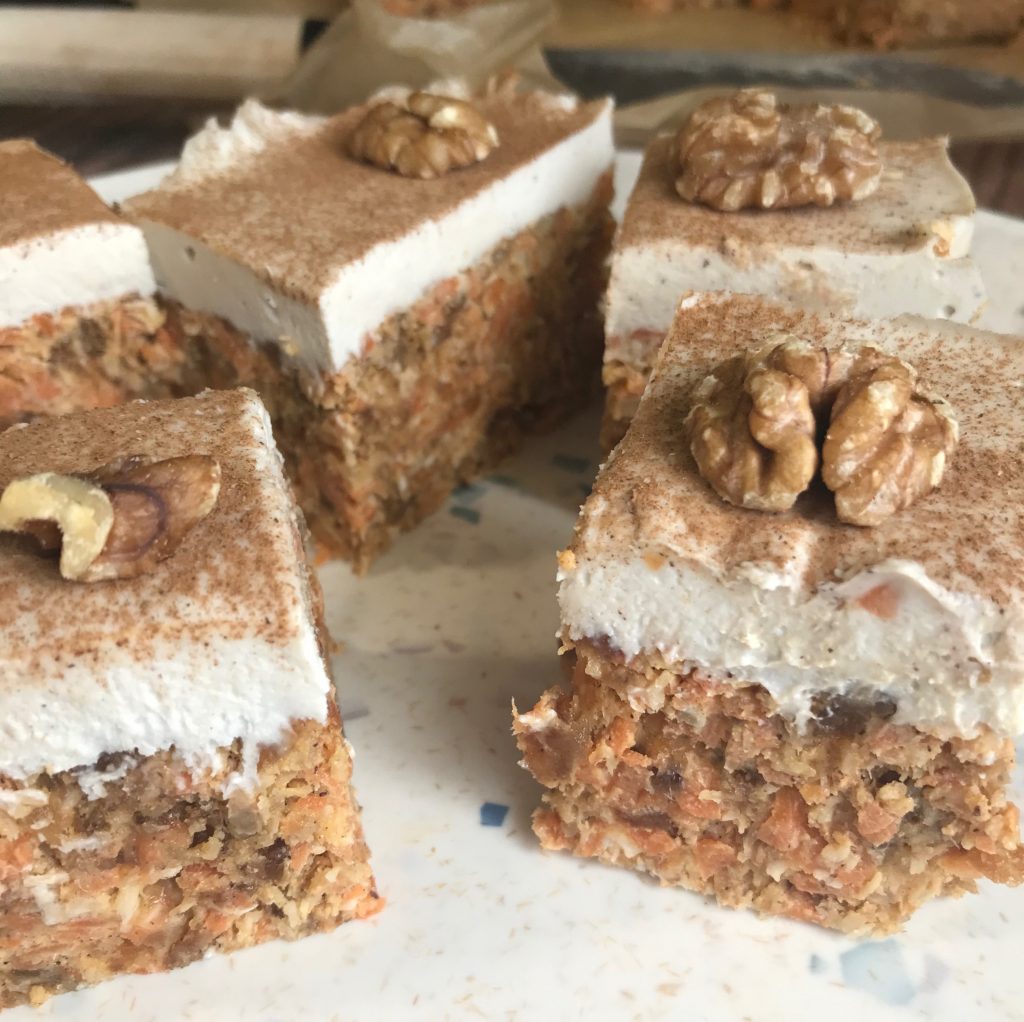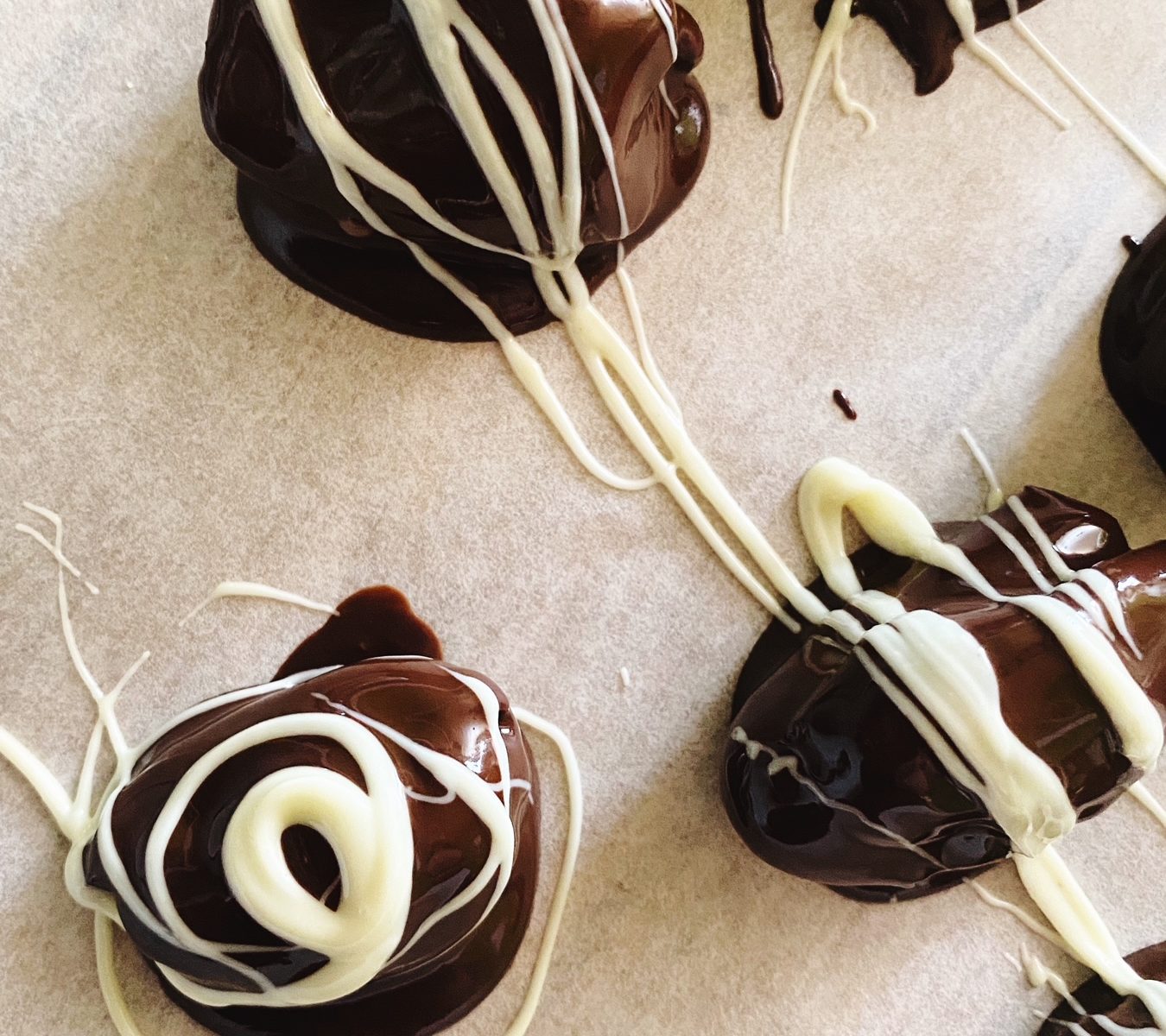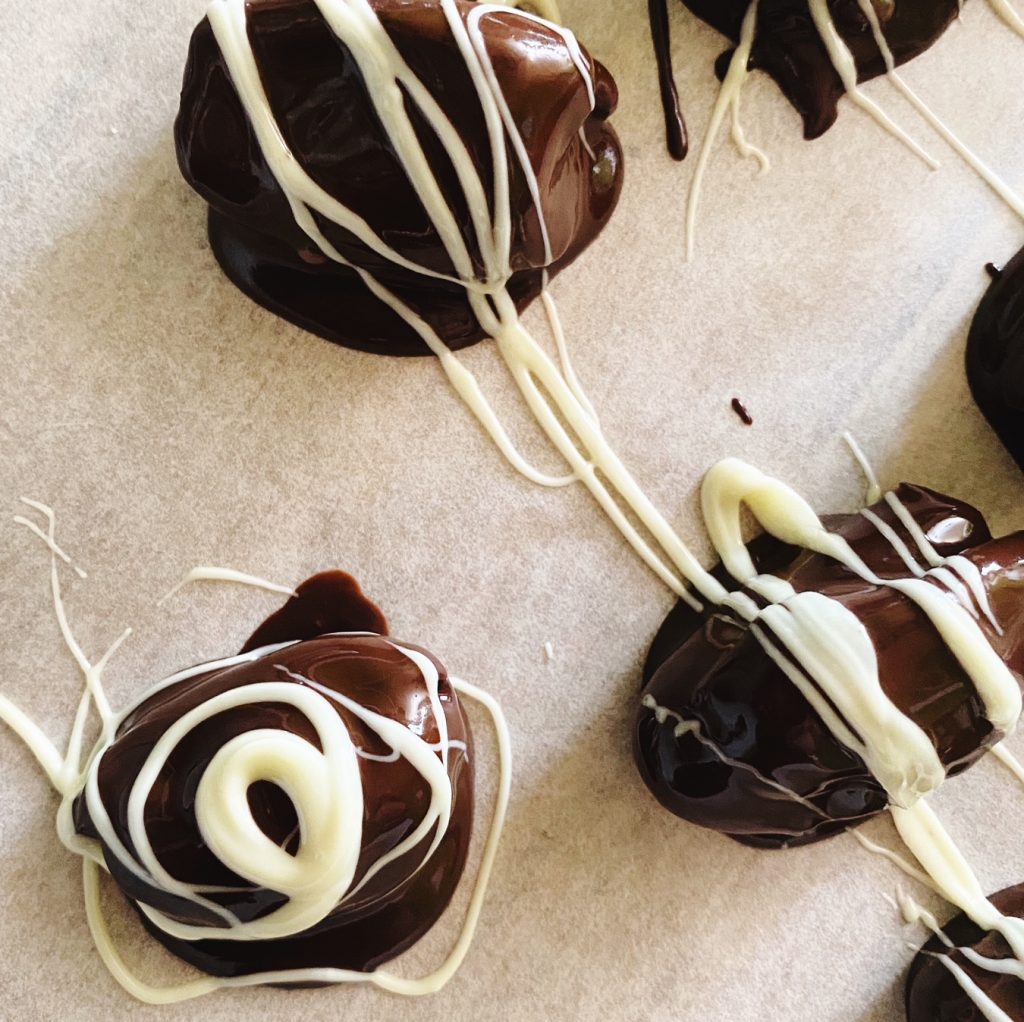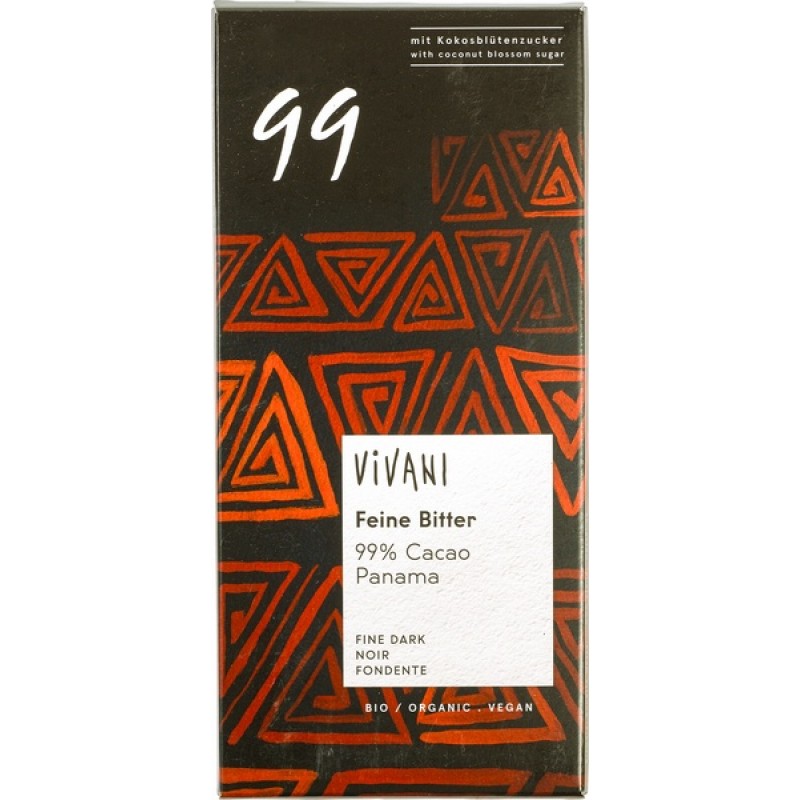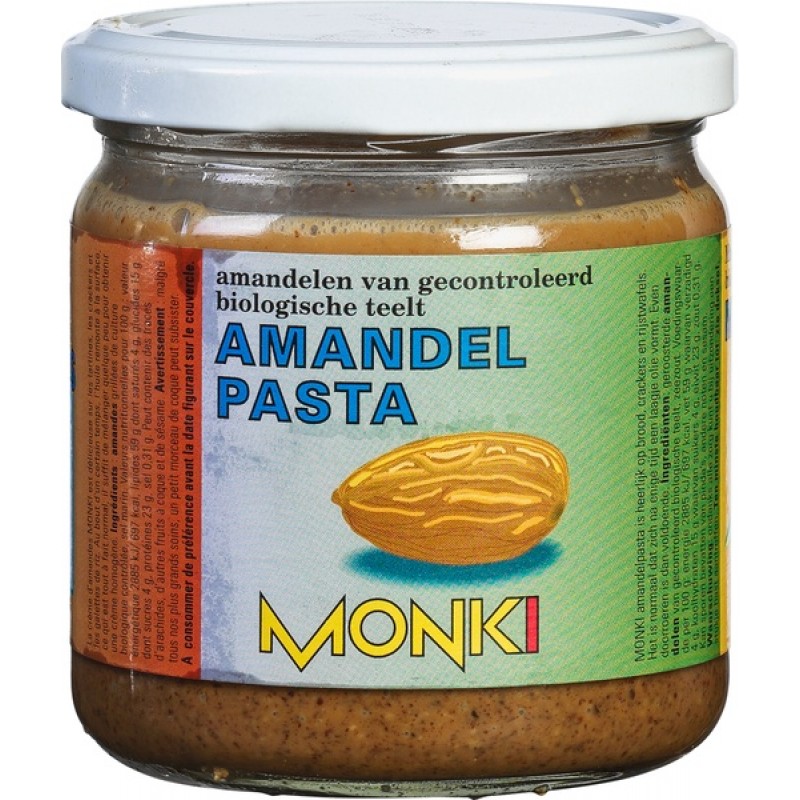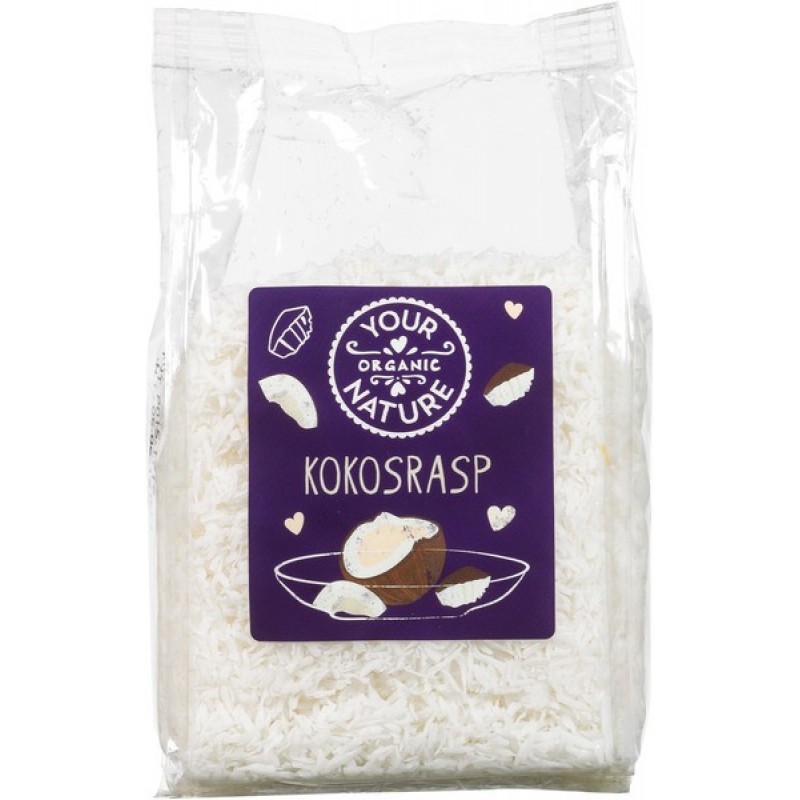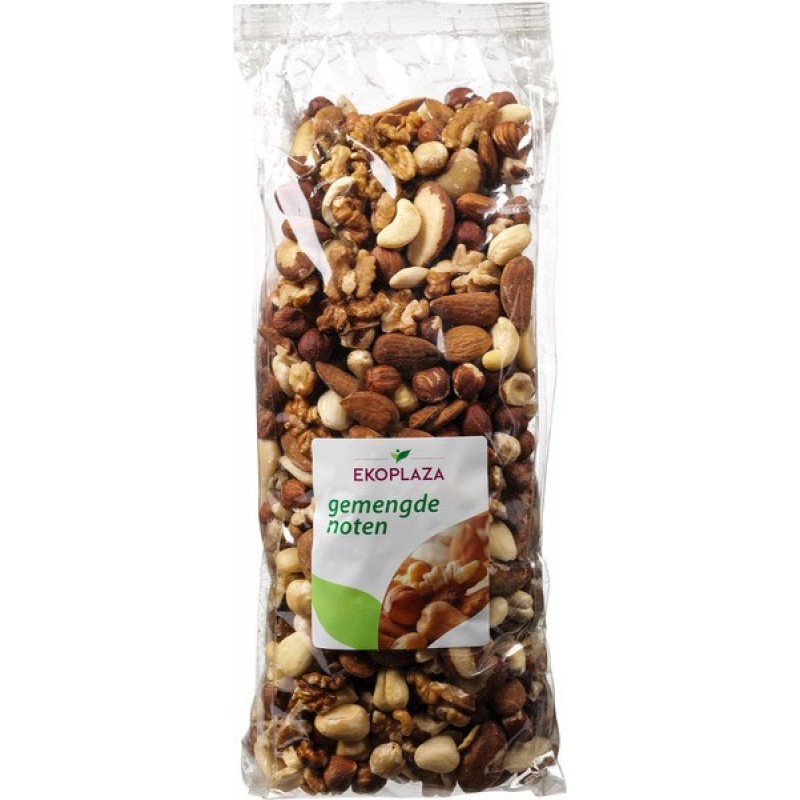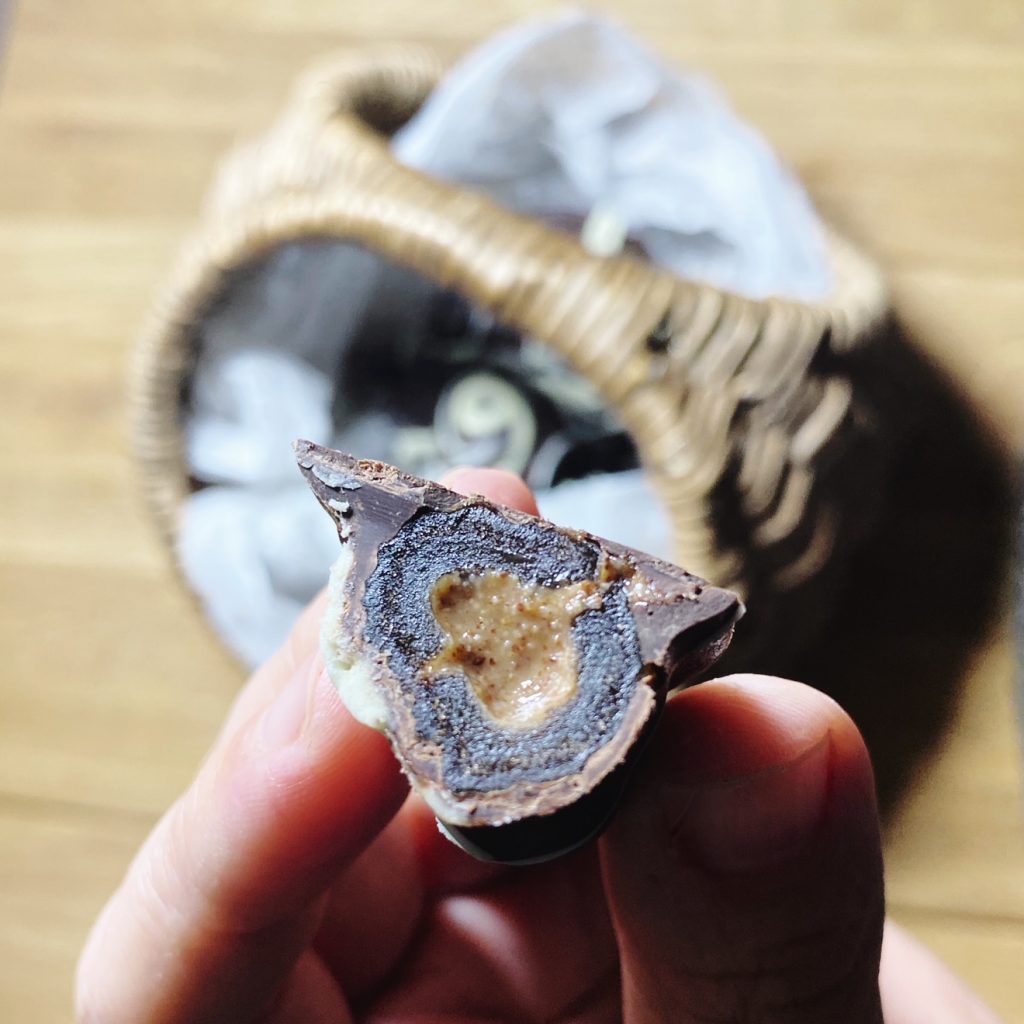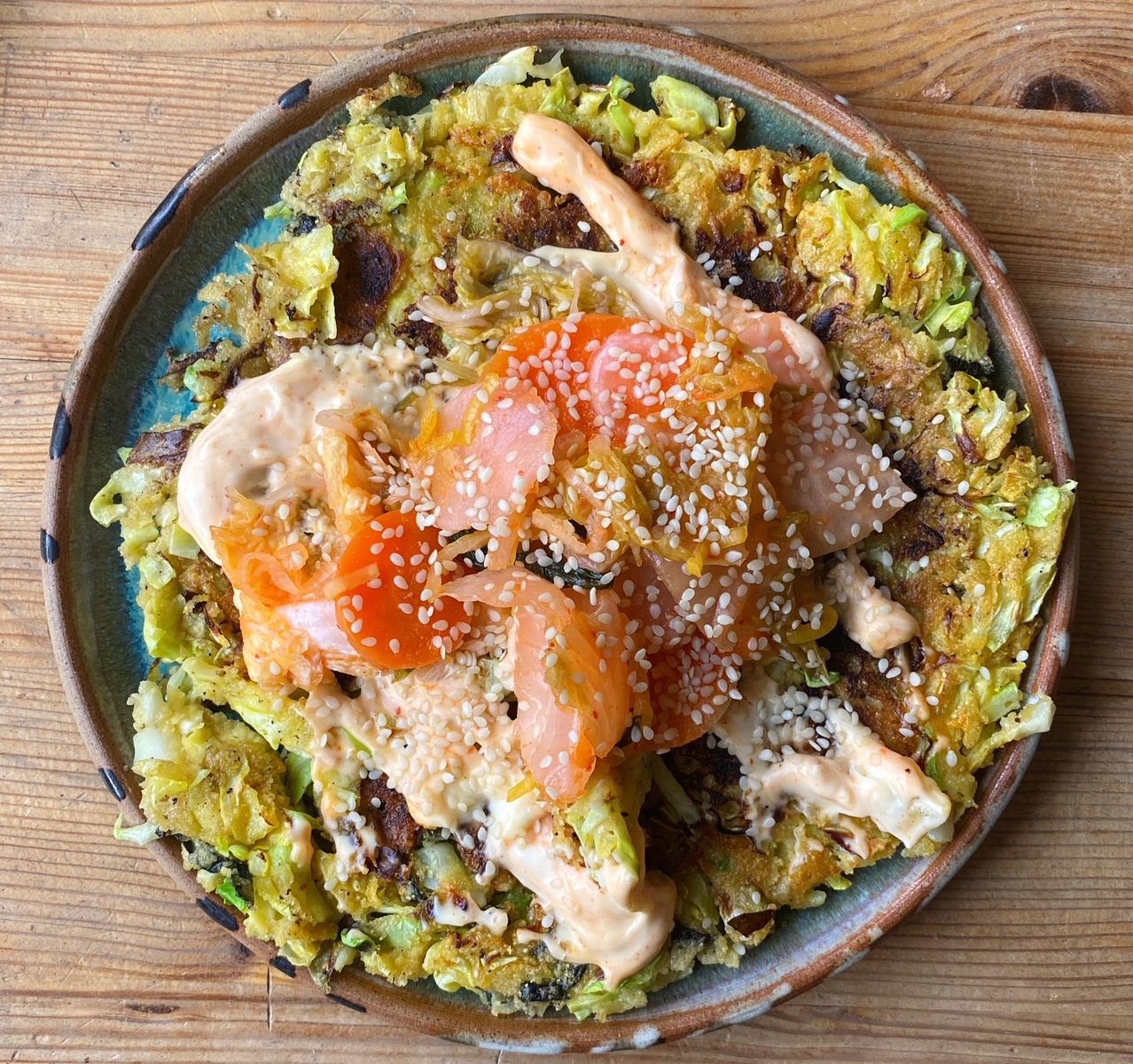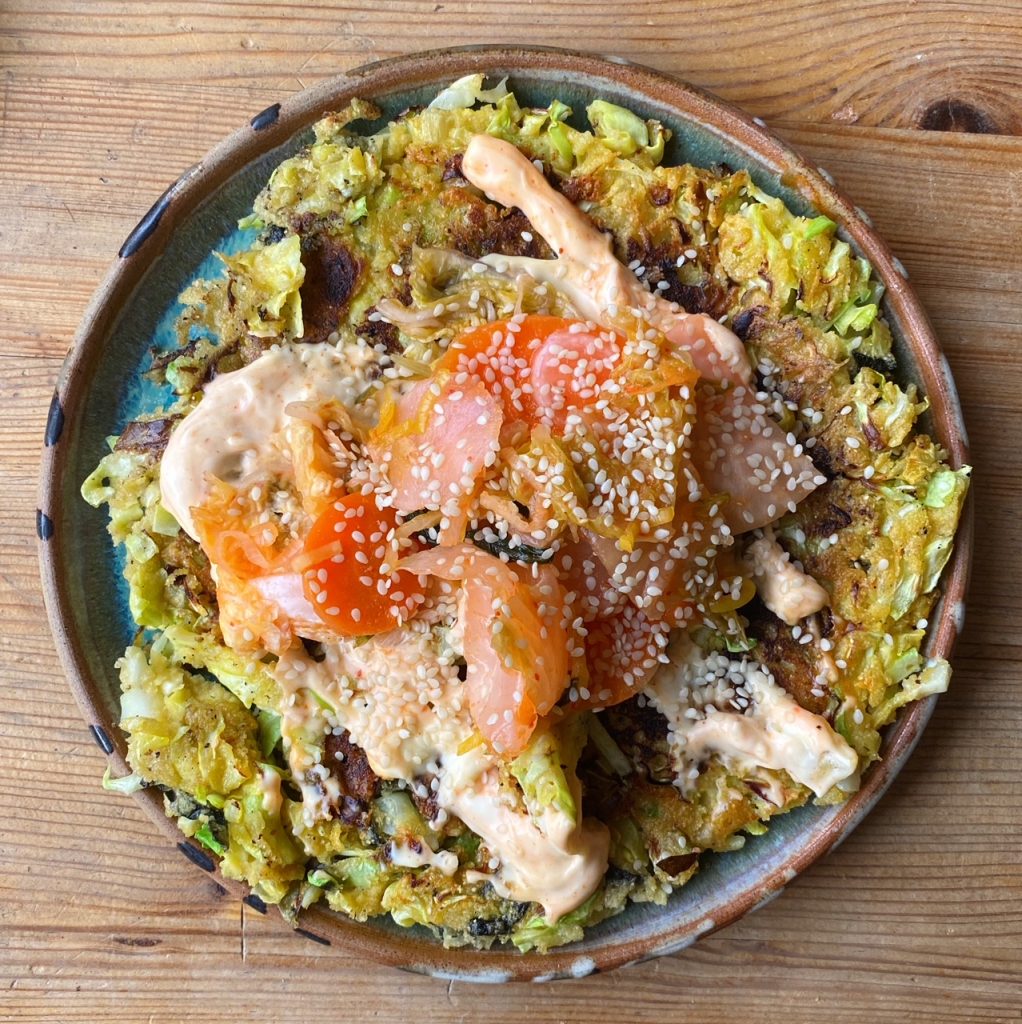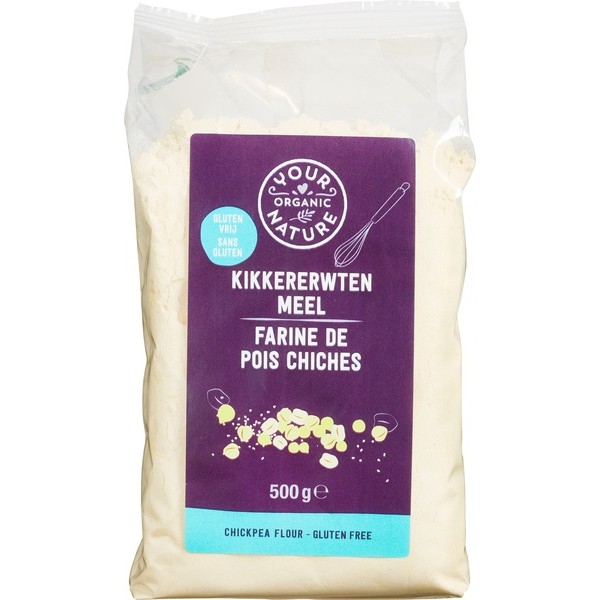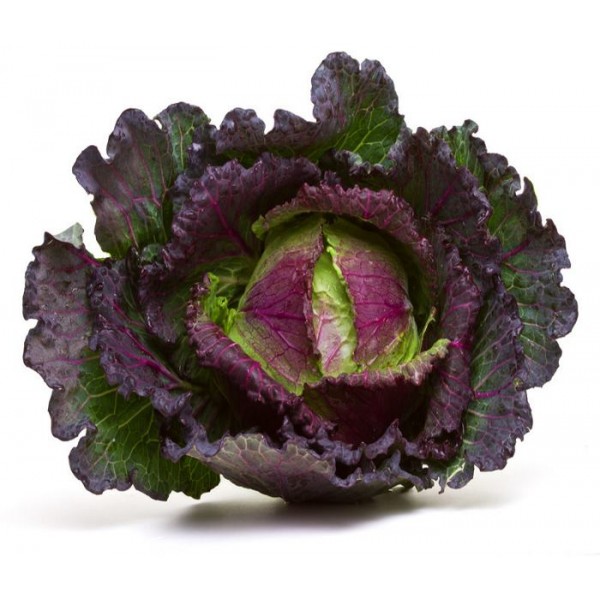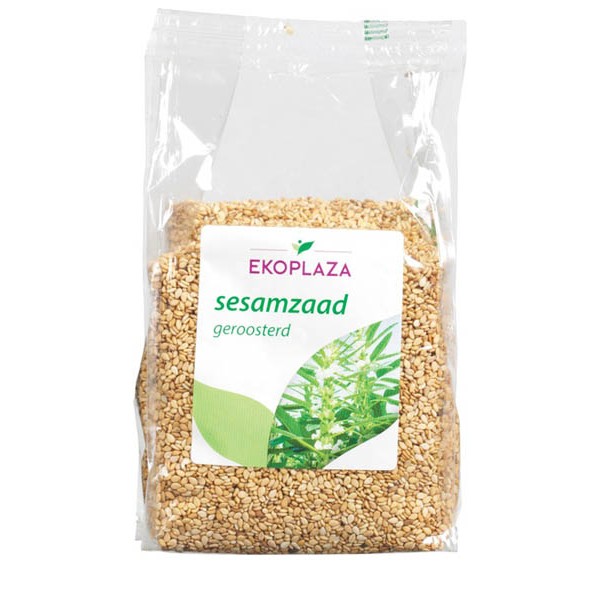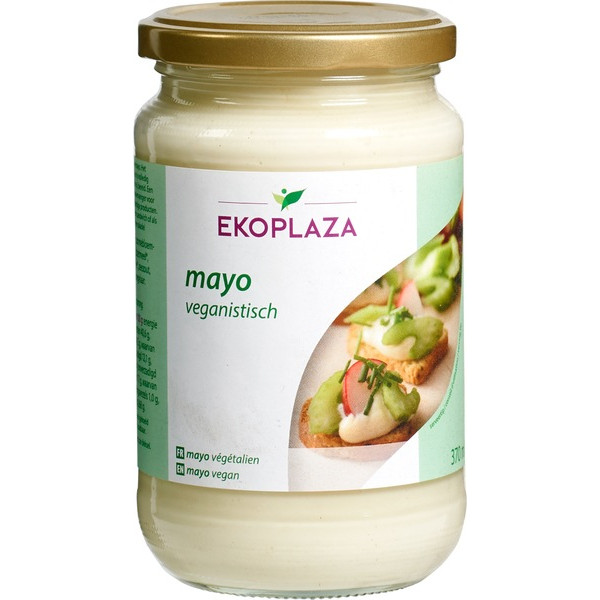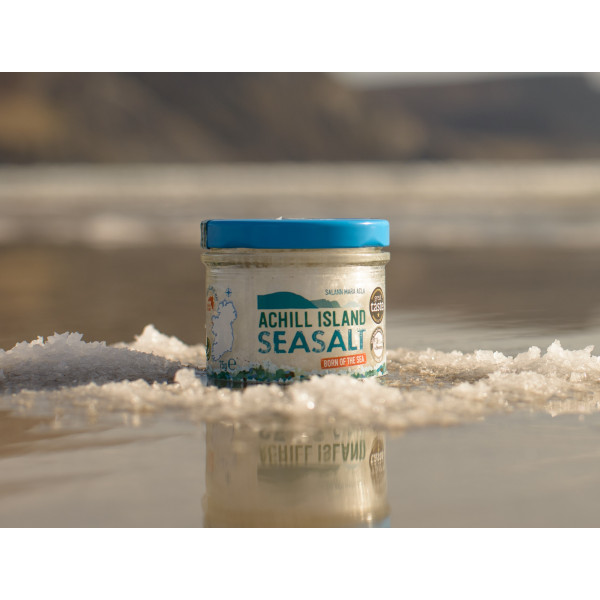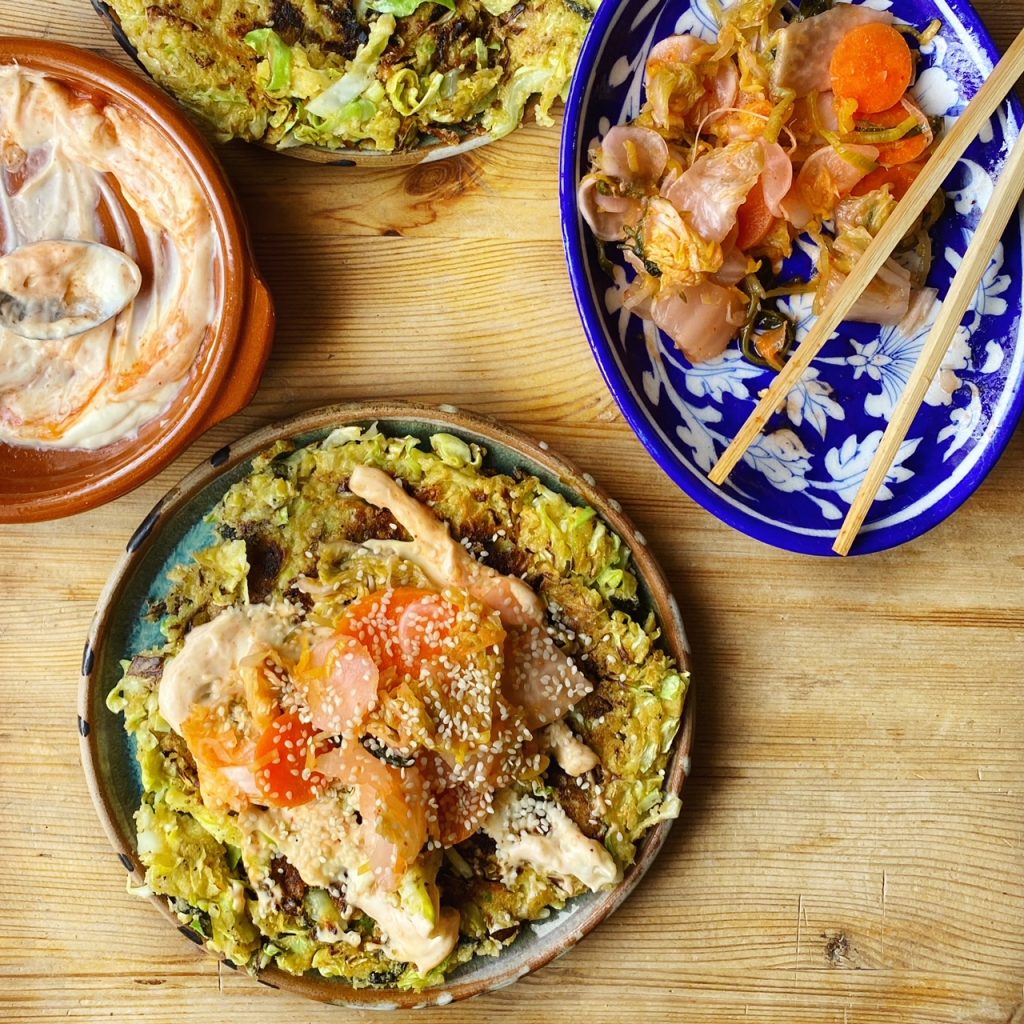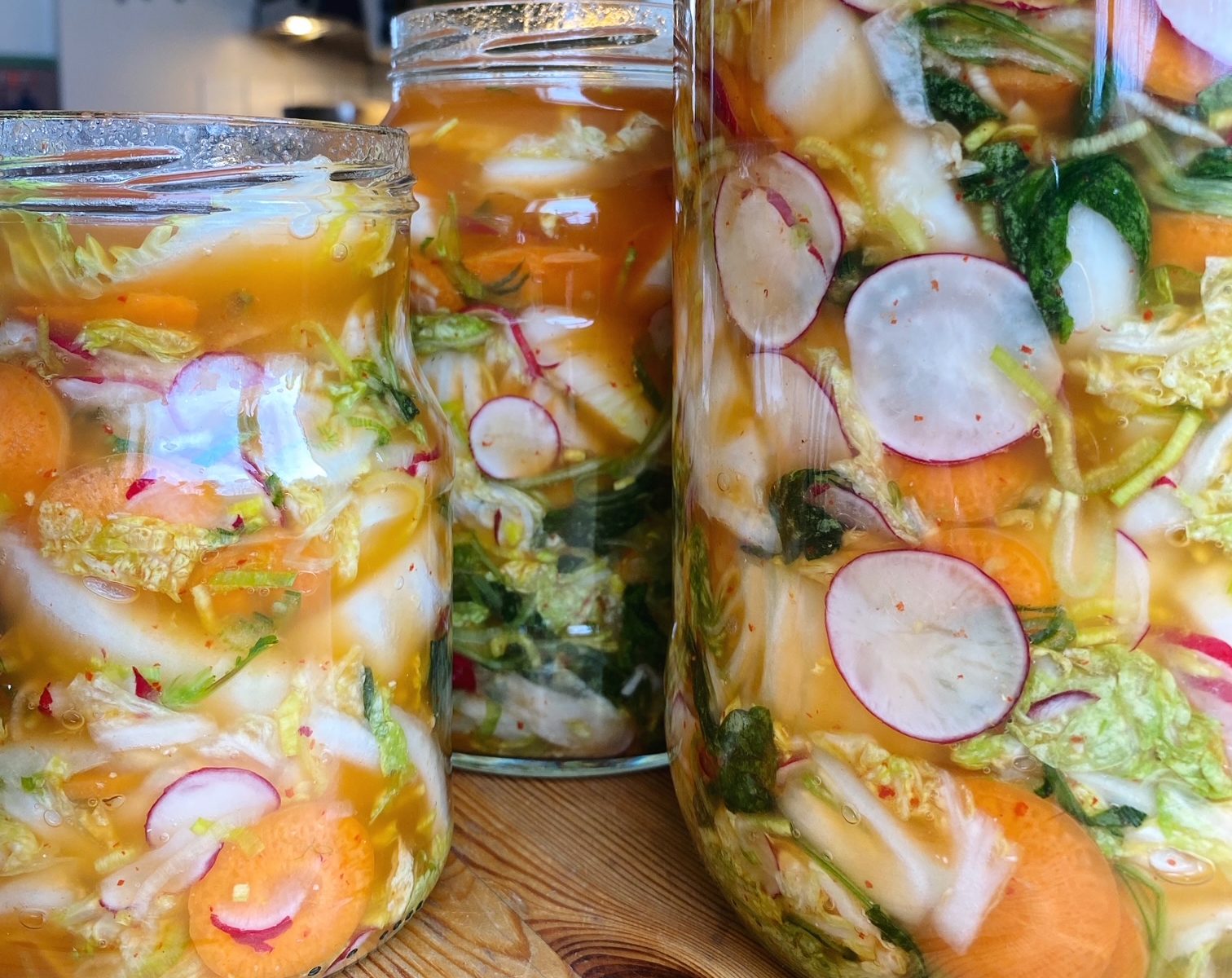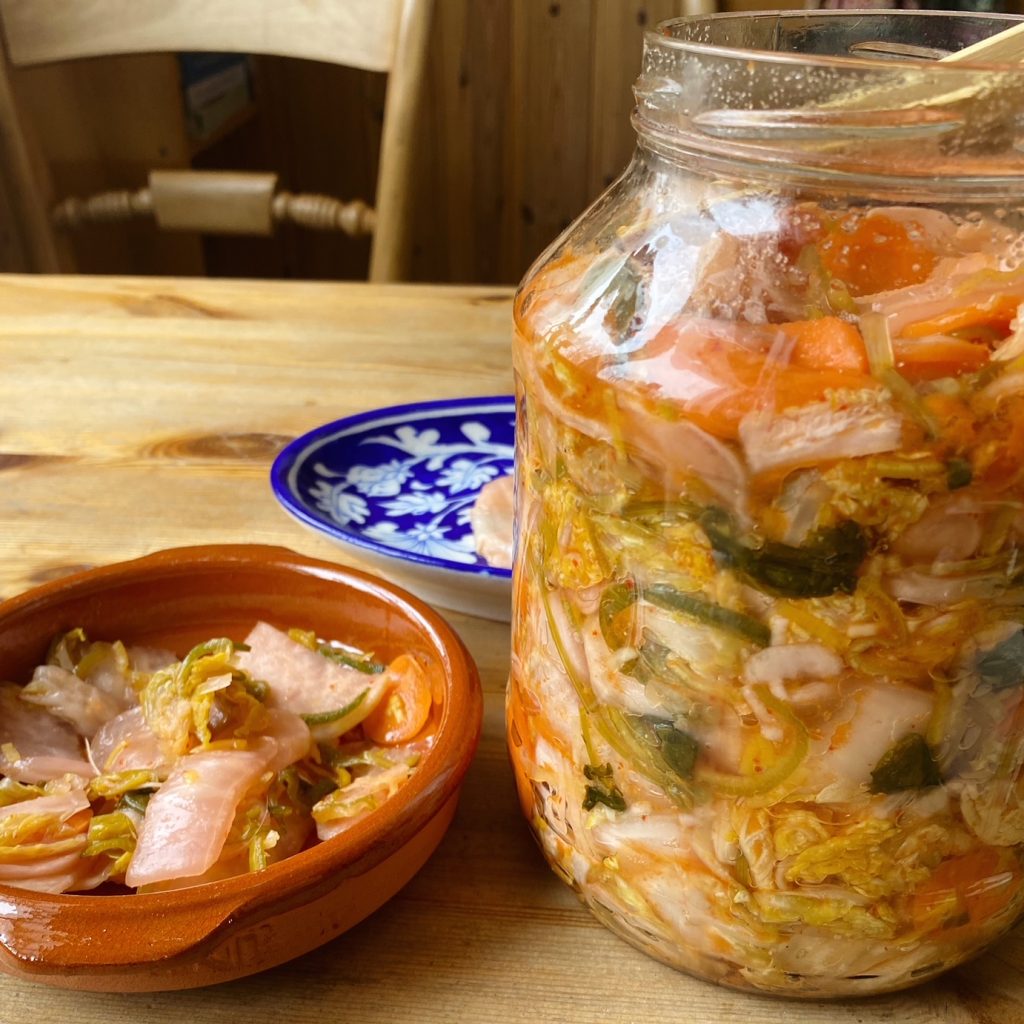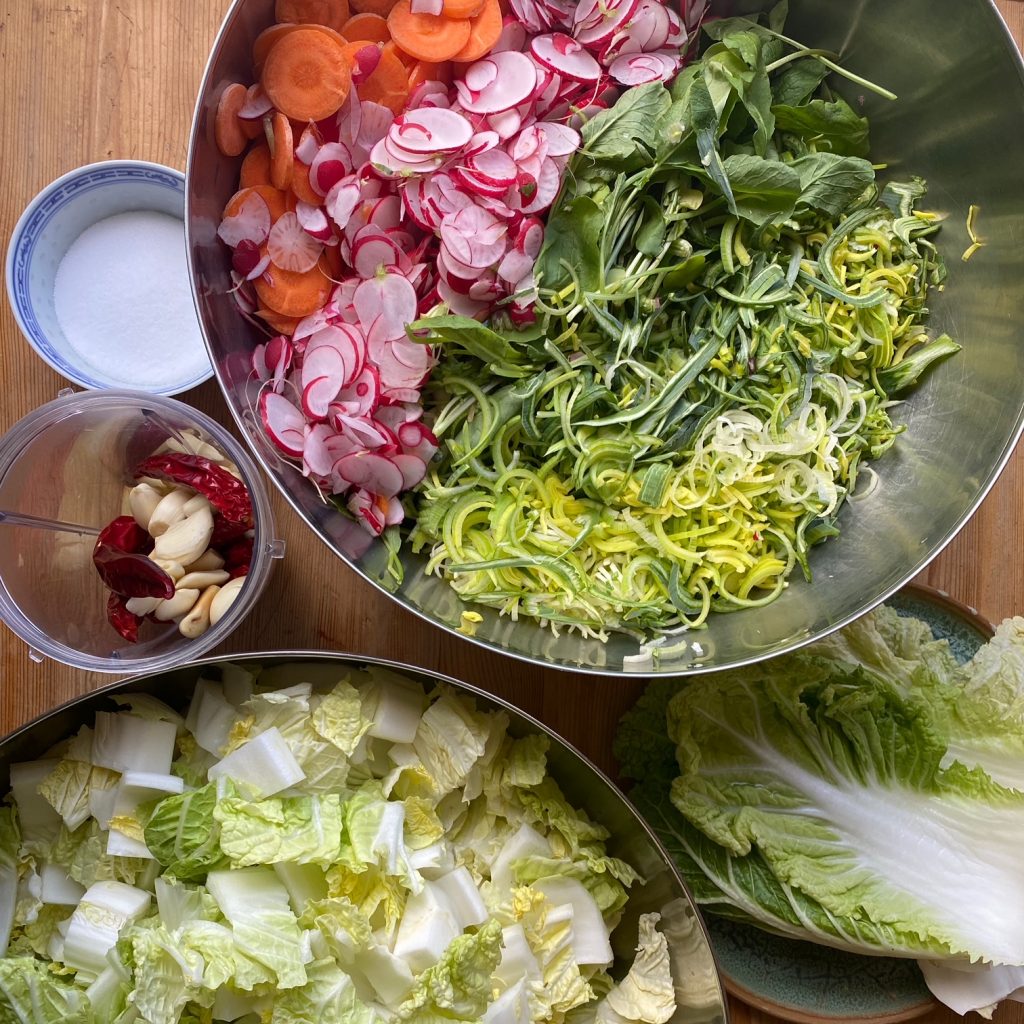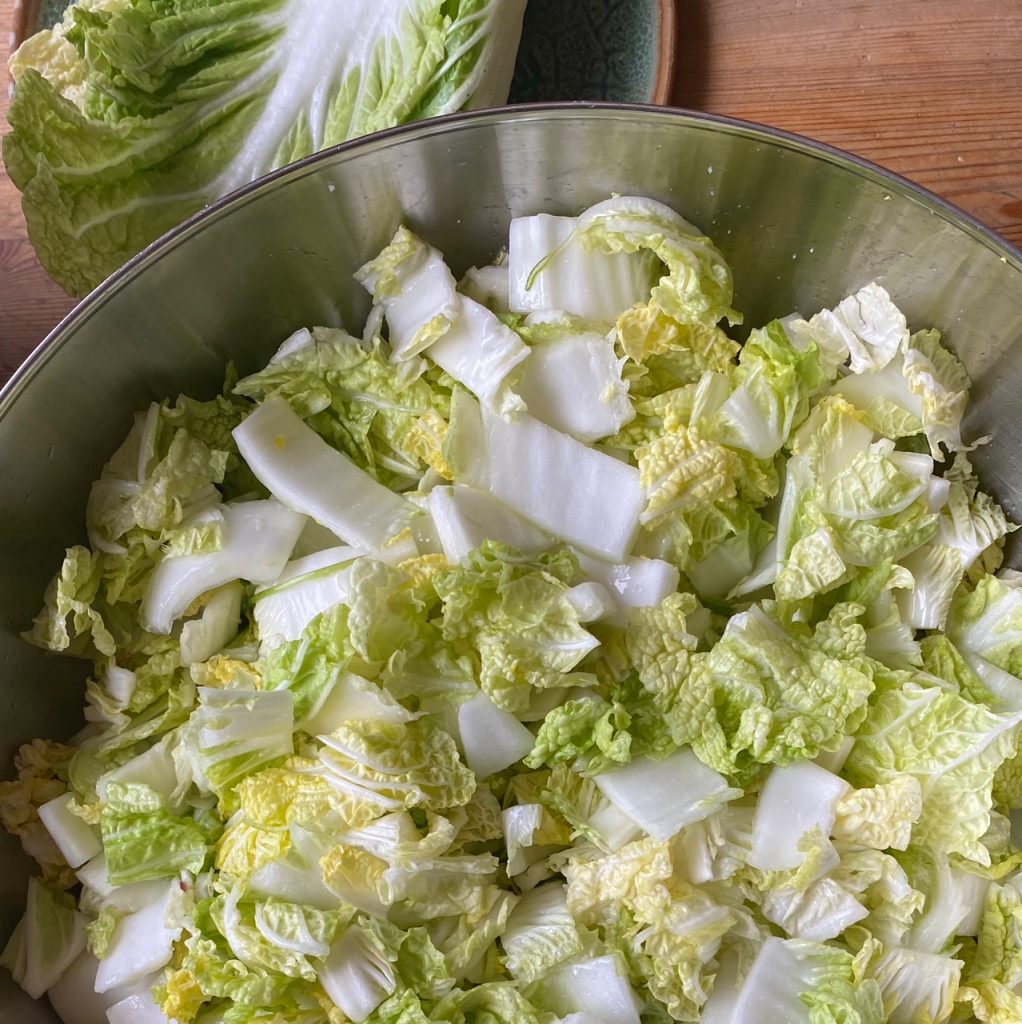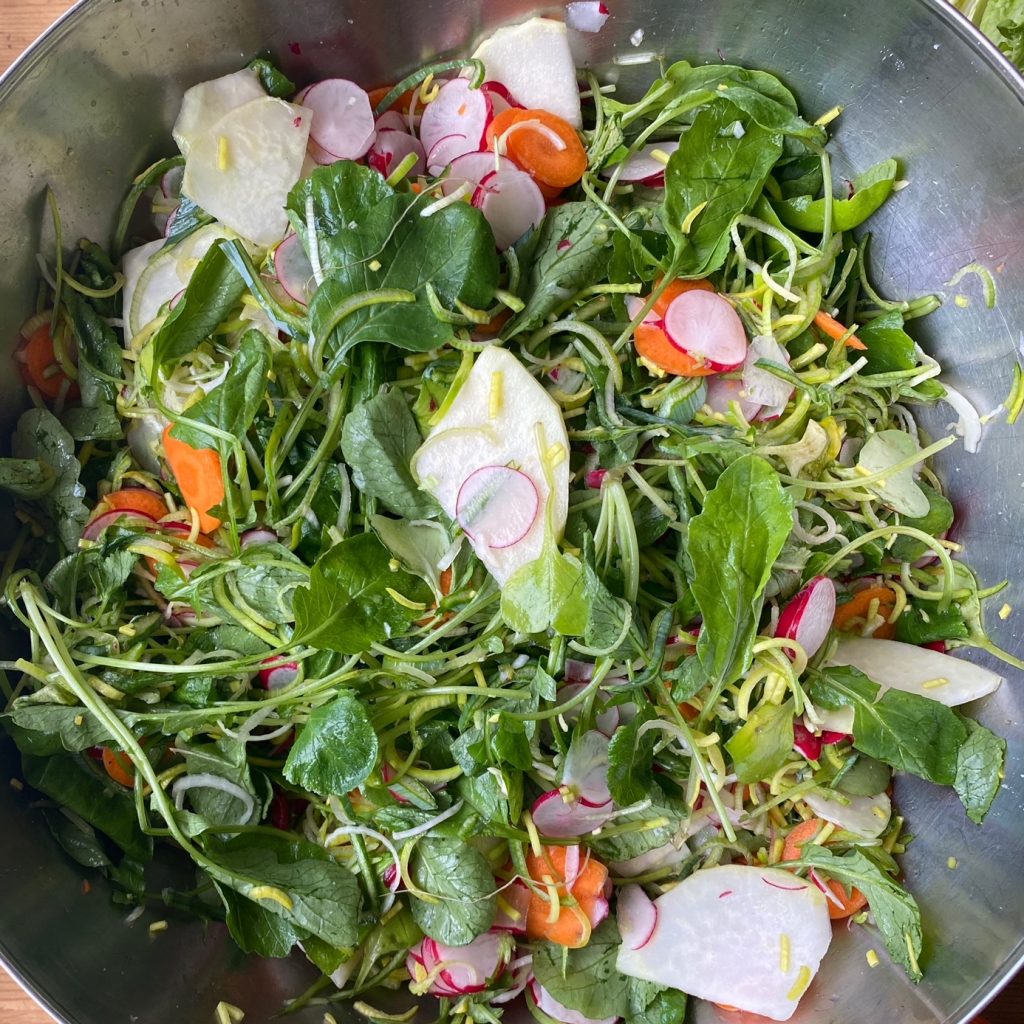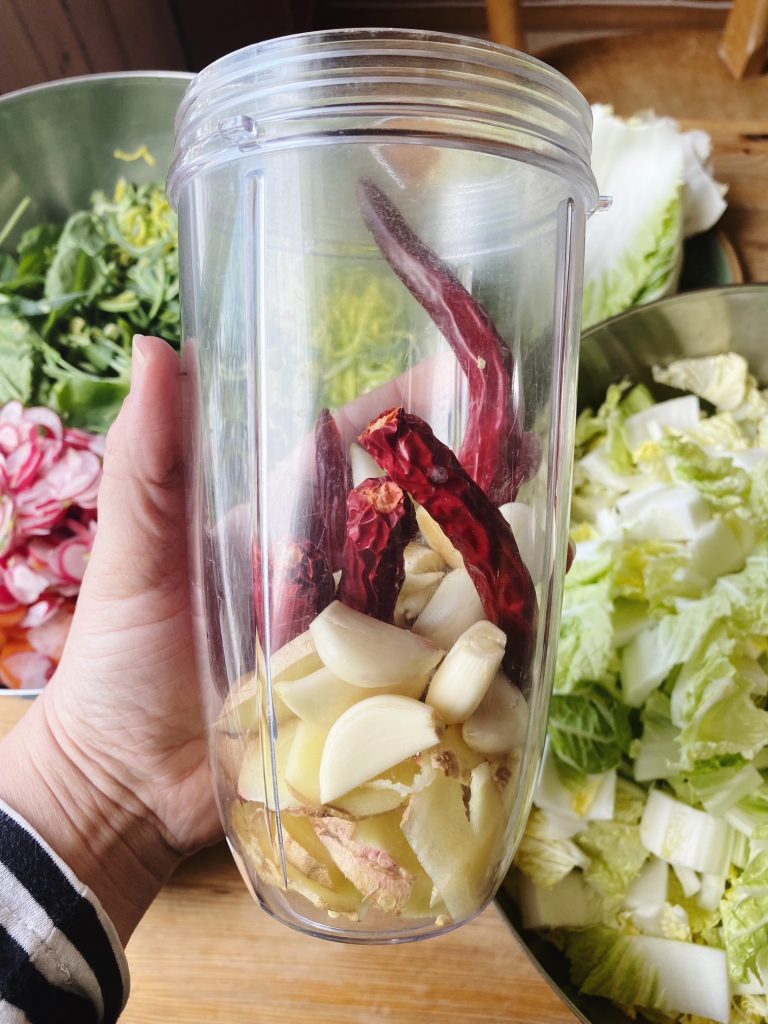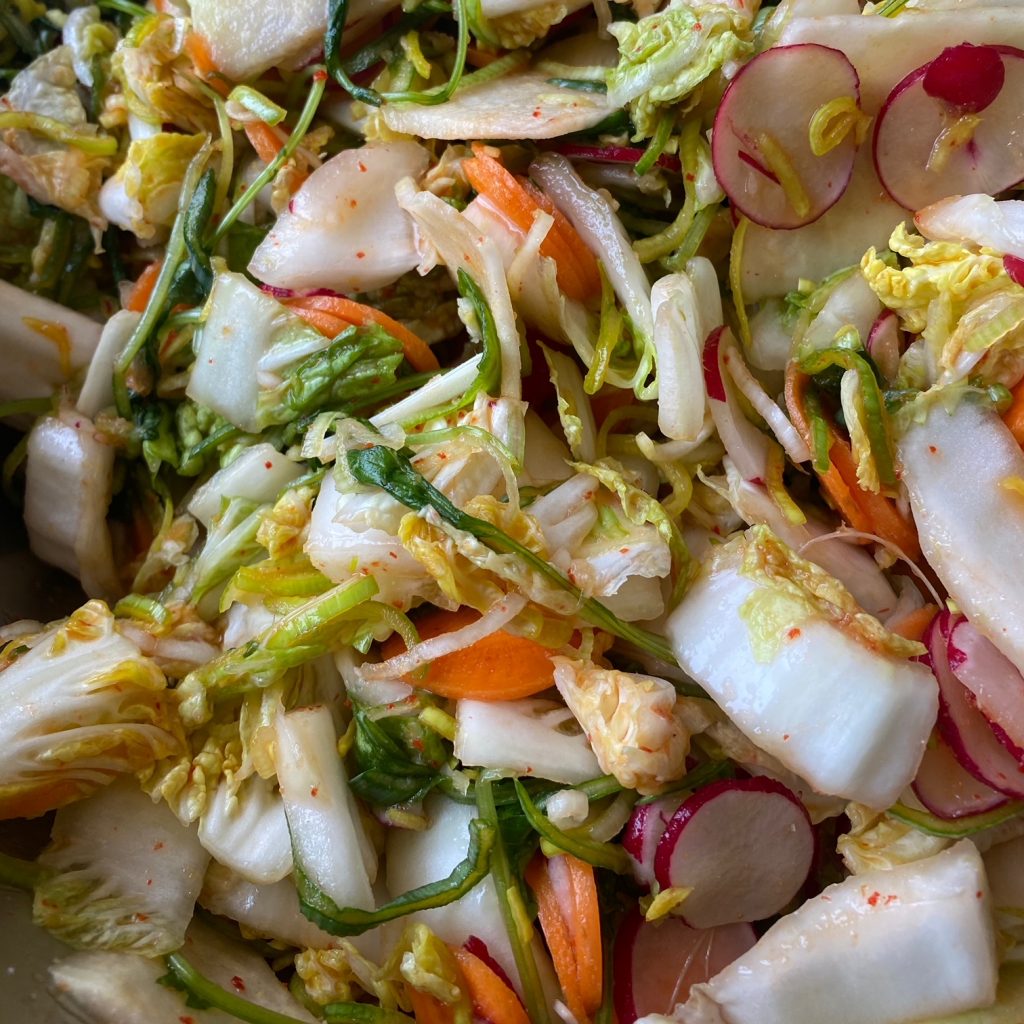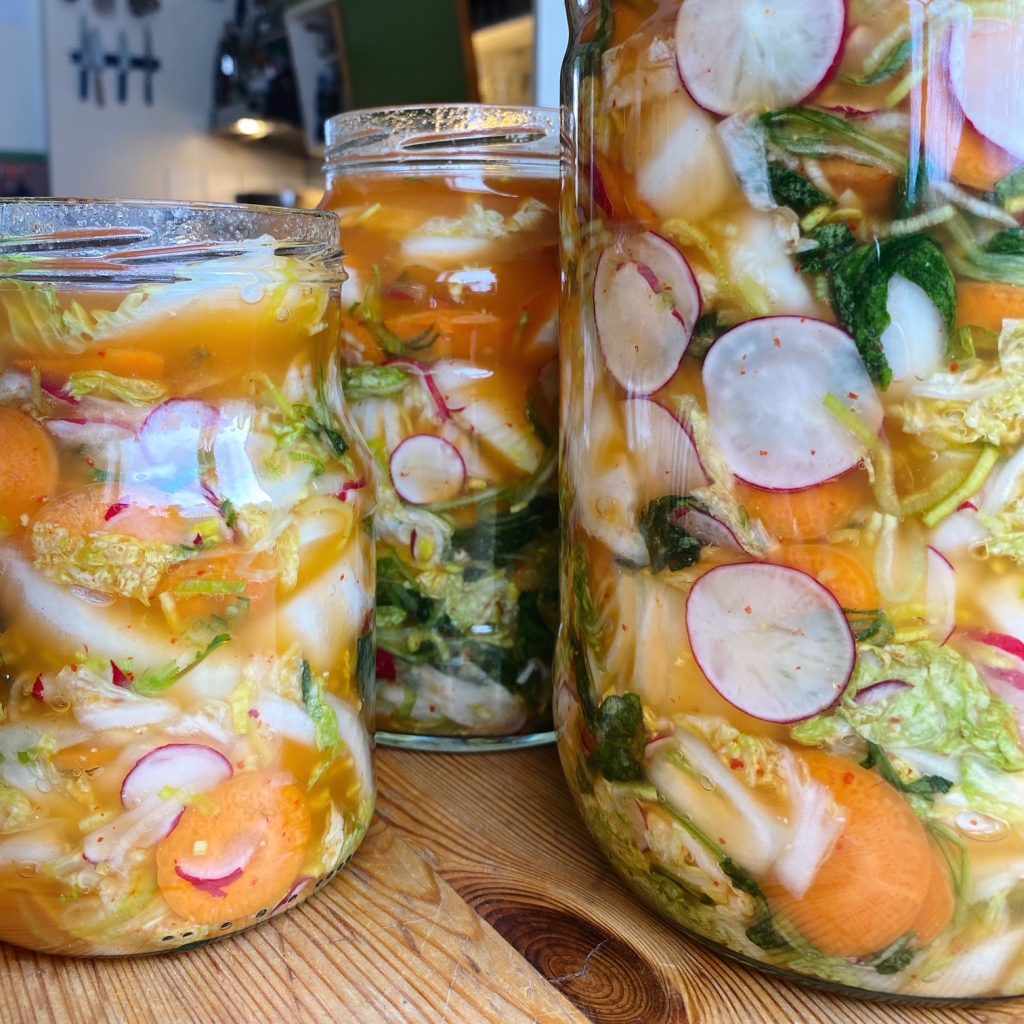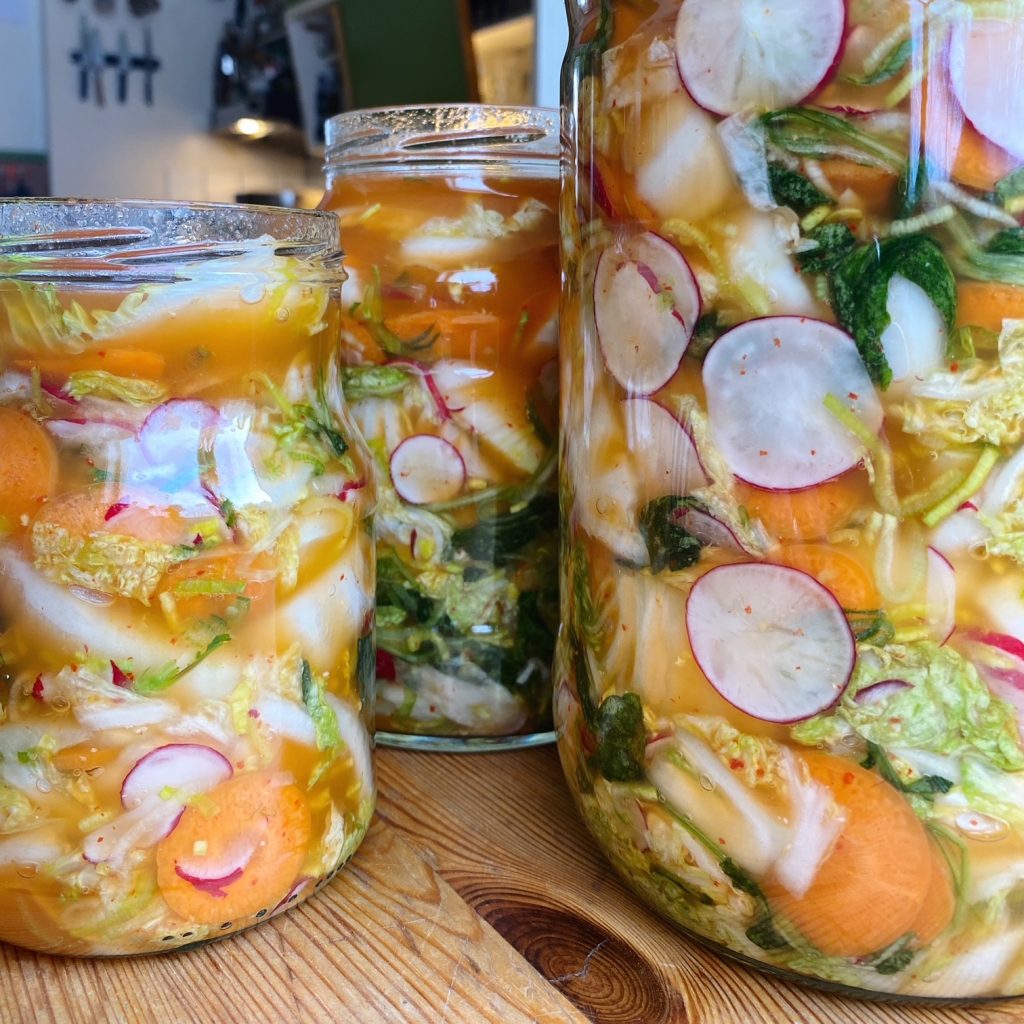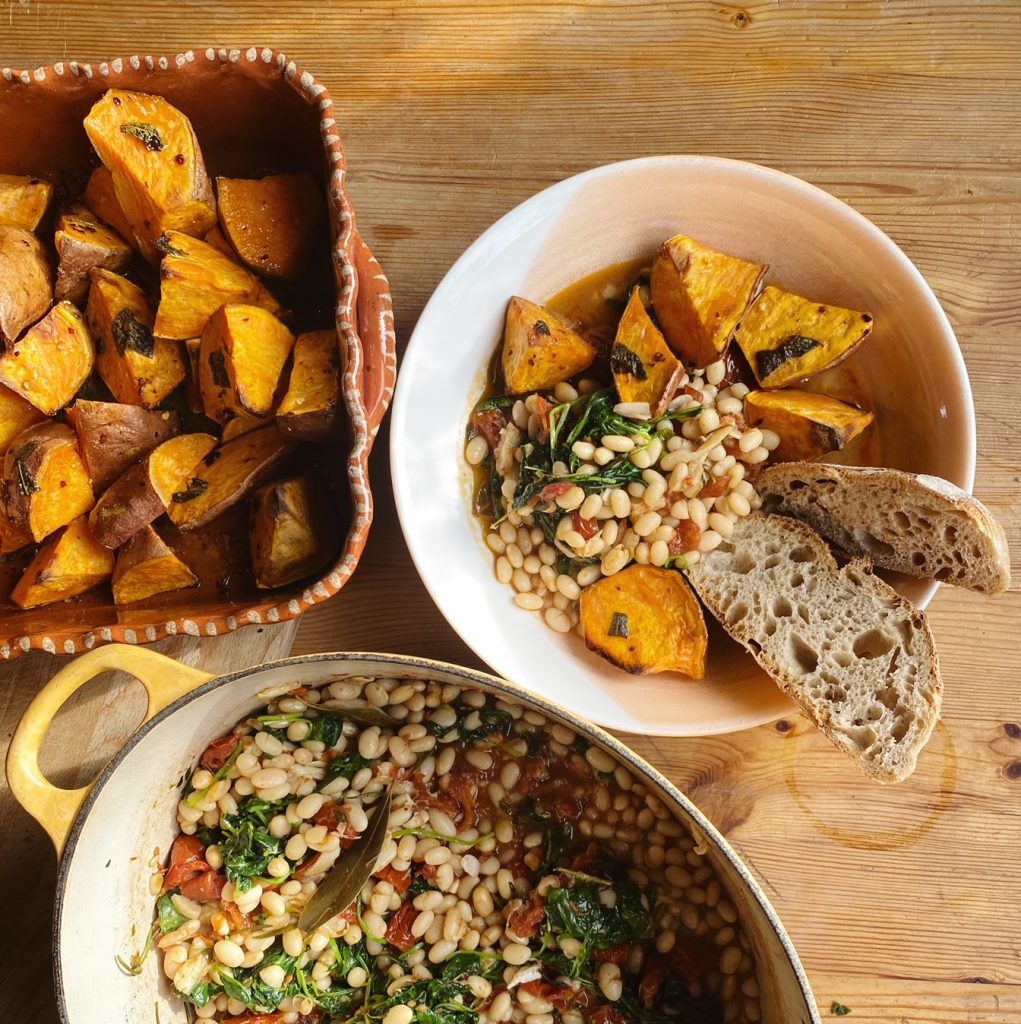
We lean heavily on our pantry this time of year during the hungry gap (that time when Irish winter veg are finished and the summer harvests are still a little way away). Beans and lentils are so nourishing, cheap and filling – and they are climate friendly crops too. This is our favourite way to make a pot of white beans. We sometimes make it with dried beans when we have the time, but here is a quicker version with tinned beans for you. You can customise it as you like with greens wilted in at the last minute, top with roasted vegetables or just scoop it up with some good bread. So so delicious!
Liz x
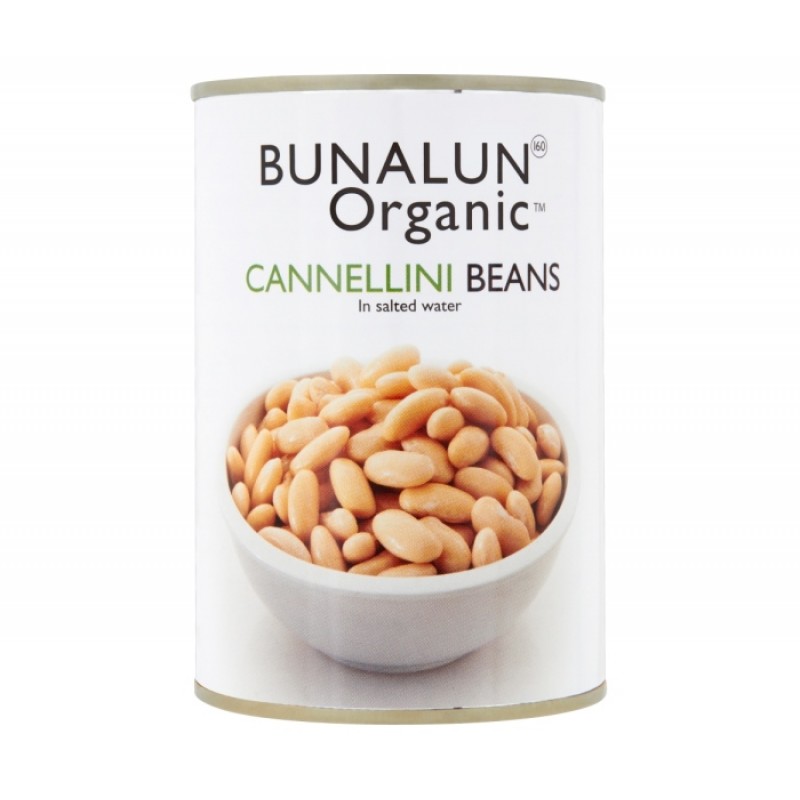
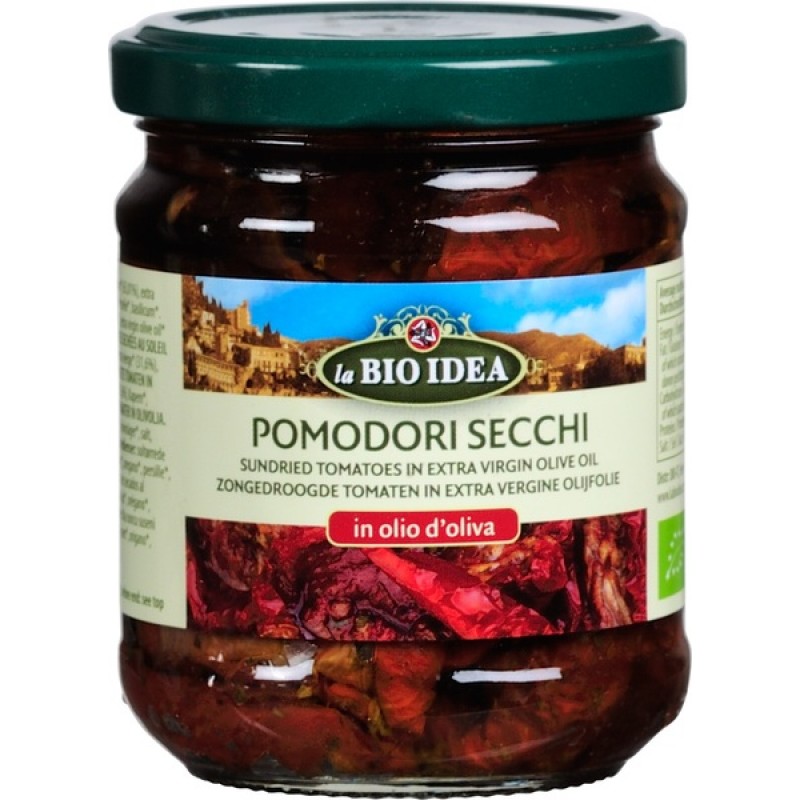
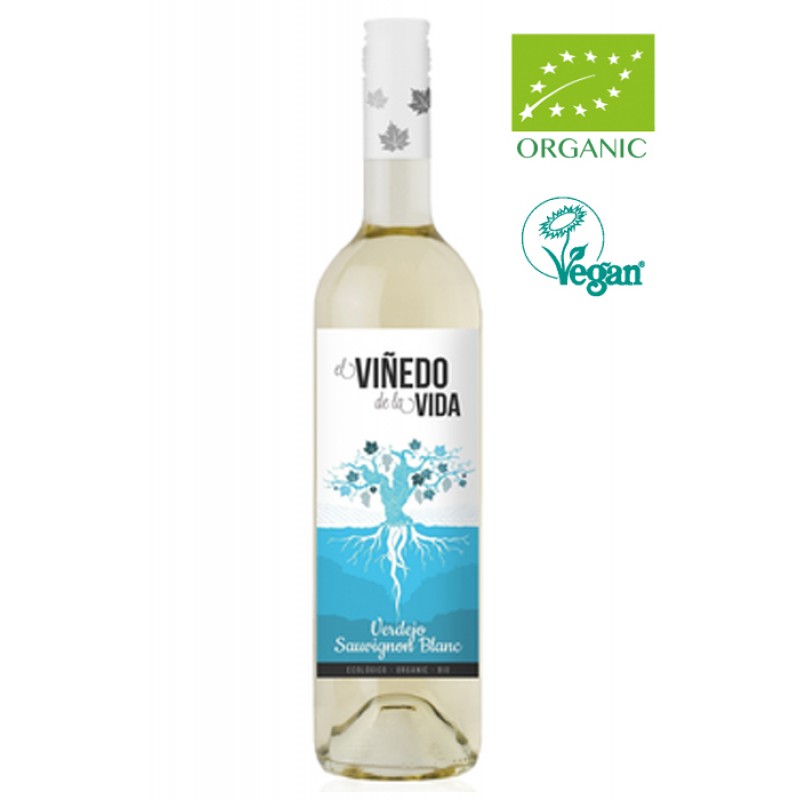
Ingredients (serves 4)
- 2 sweet potatoes – scrubbed & chopped into chunks
- 2 tbsp olive oil
- 1/2 tsp chilli flakes
- 6 fresh sage leaves, sliced
- 1 jar of sun-dried tomatoes in oil
- a whole bulb of garlic – cloves separated, peeled & sliced
- 3 bay leaves
- a large handful of rosemary
- 2 tins butterbeans or cannellini beans
- a large handful of fresh thyme
- a large glass of white wine
- salt & pepper to taste
- chopped spinach or kale or another leafy green you like
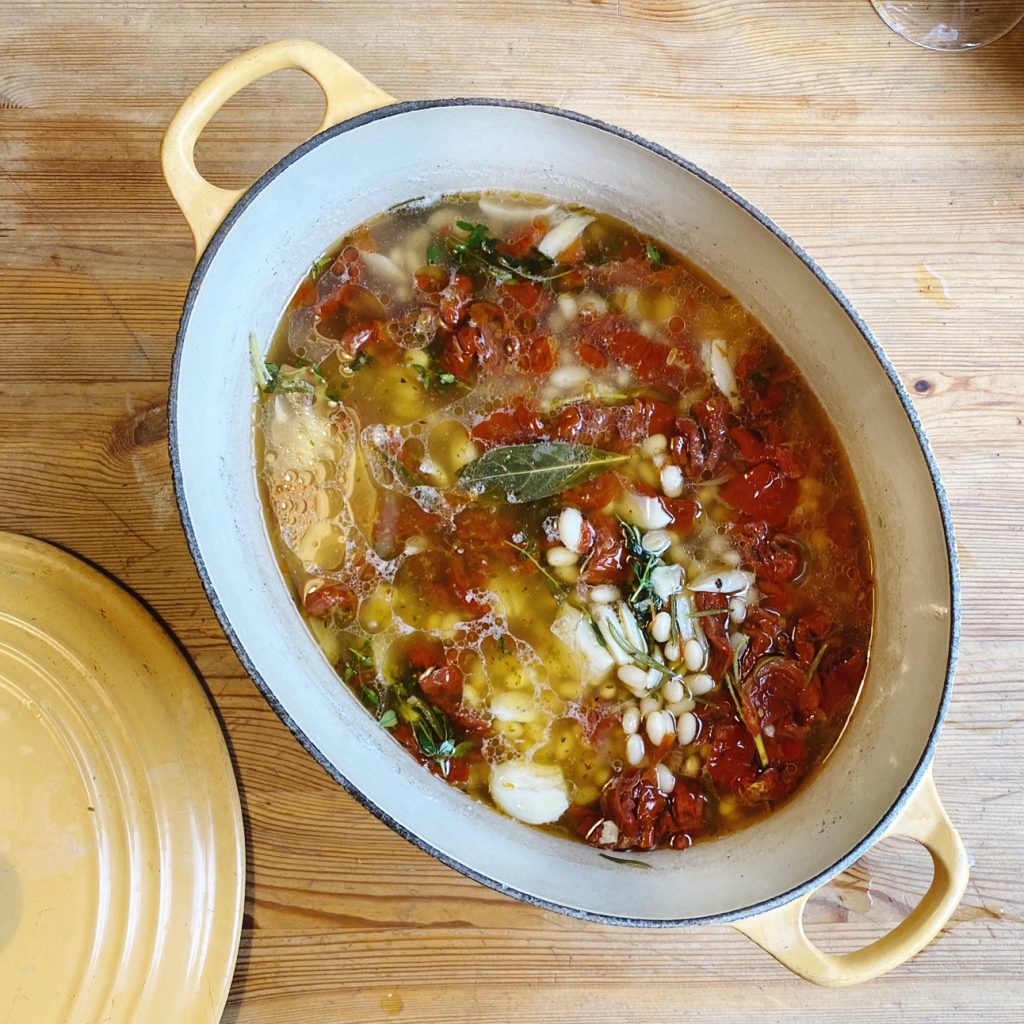
Method
- Turn the oven to 200C and tumble your sweet potatoes into a roasting dish. Drizzle with the olive oil, season with salt and sprinkle over the chilli flakes and chopped sage. Shake the dish to evenly coat the potatoes in the seasoning then pop it in the oven to bake while you make the beans. Depending on your oven and the size of your chunks, they should take around 20-30 minutes to cook through.
- Drain the oil from the sun-dried tomatoes into a pot. Then, using kitchen scissors, chop the sun-dried tomatoes up into strips. Then turn the heat under the pot to medium-high and add the sliced garlic, bay leaves and rosemary. Cook until the garlic is softening and starting to colour.
- Then tip in the 2 tins of beans and their liquid too. Add the white wine, thyme and chopped sun-dried tomatoes. Season with a little salt and pepper then simmer gently for 15 minutes or so until the flavours have developed. Careful not to overcook the beans as they will turn to mush. Turn the heat off and let the beans rest while you wait for the sweet potatoes to cook through.
- Once the sweet potatoes are cooked through and you are ready to serve, add the greens to the beans and warm them through. Serve in wide bowls topped with the roasted sweet potatoes and scoop up with bread if you like.
